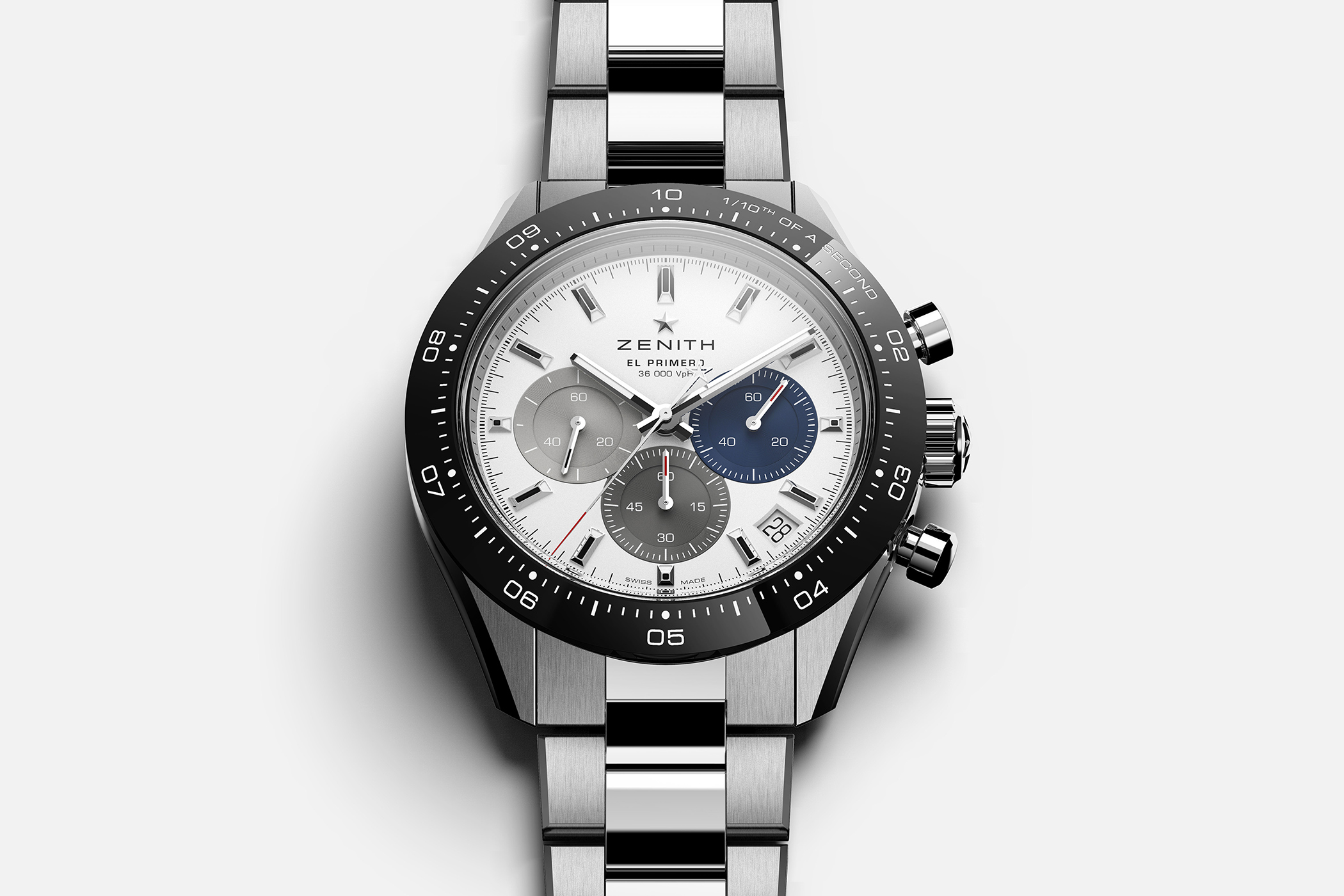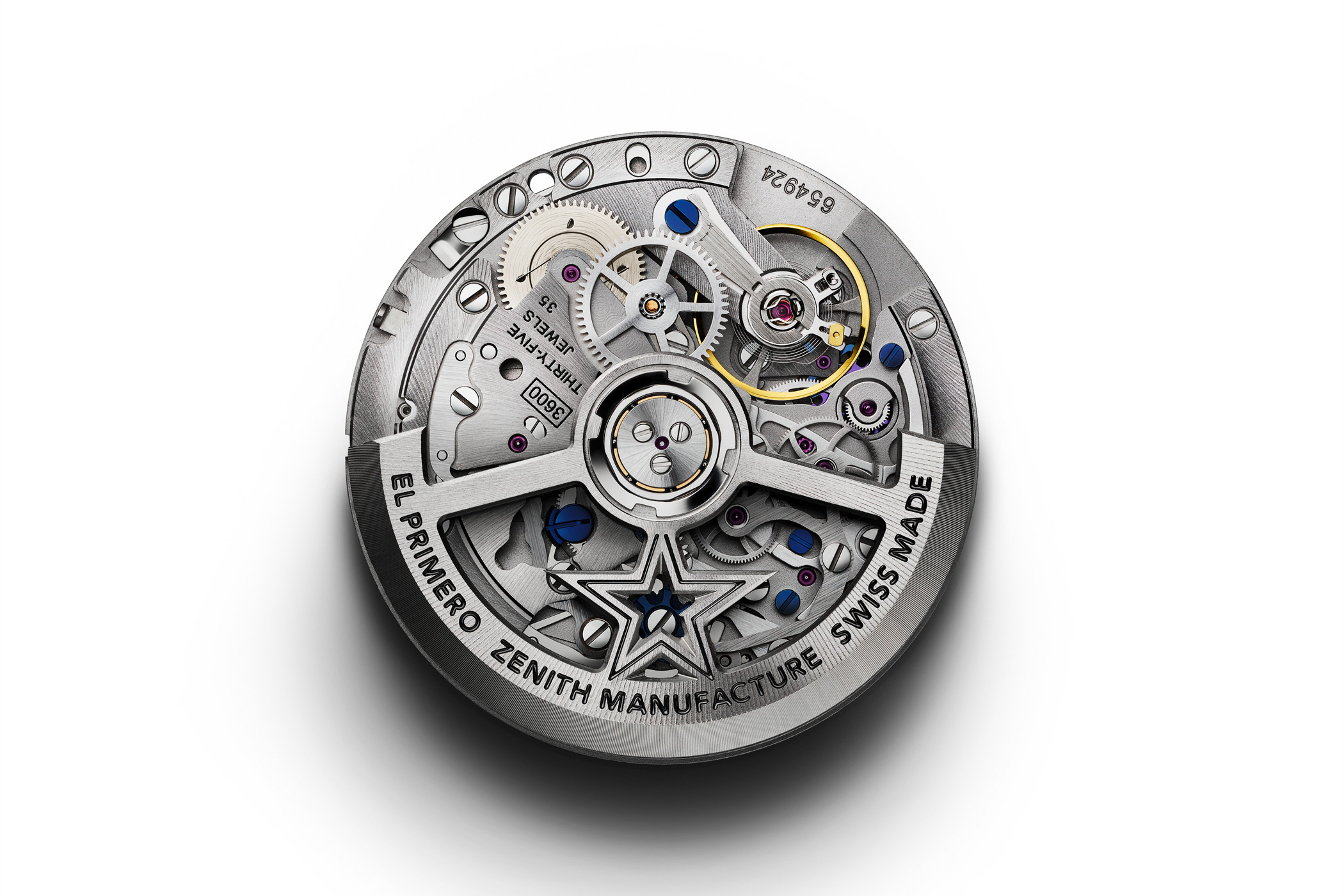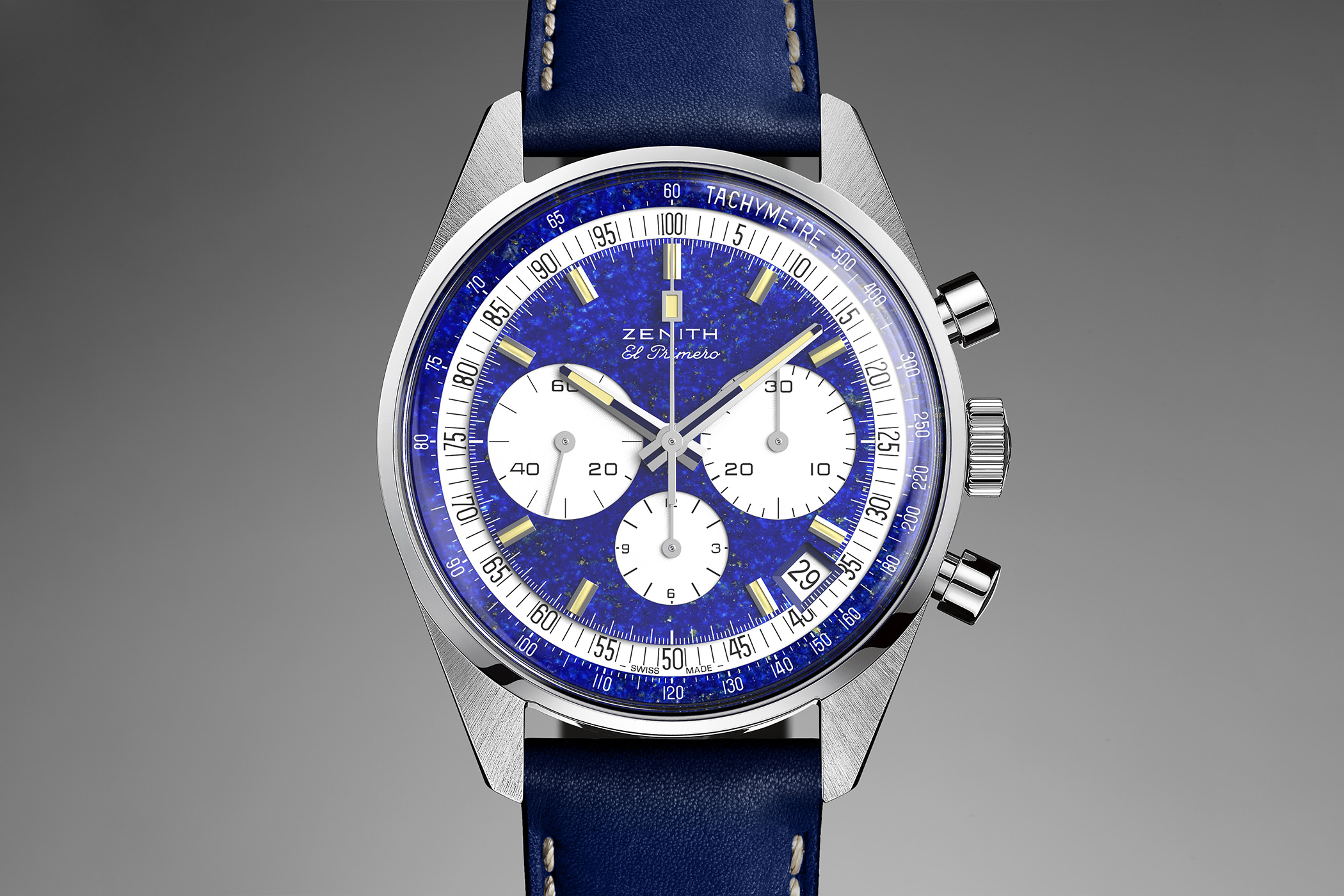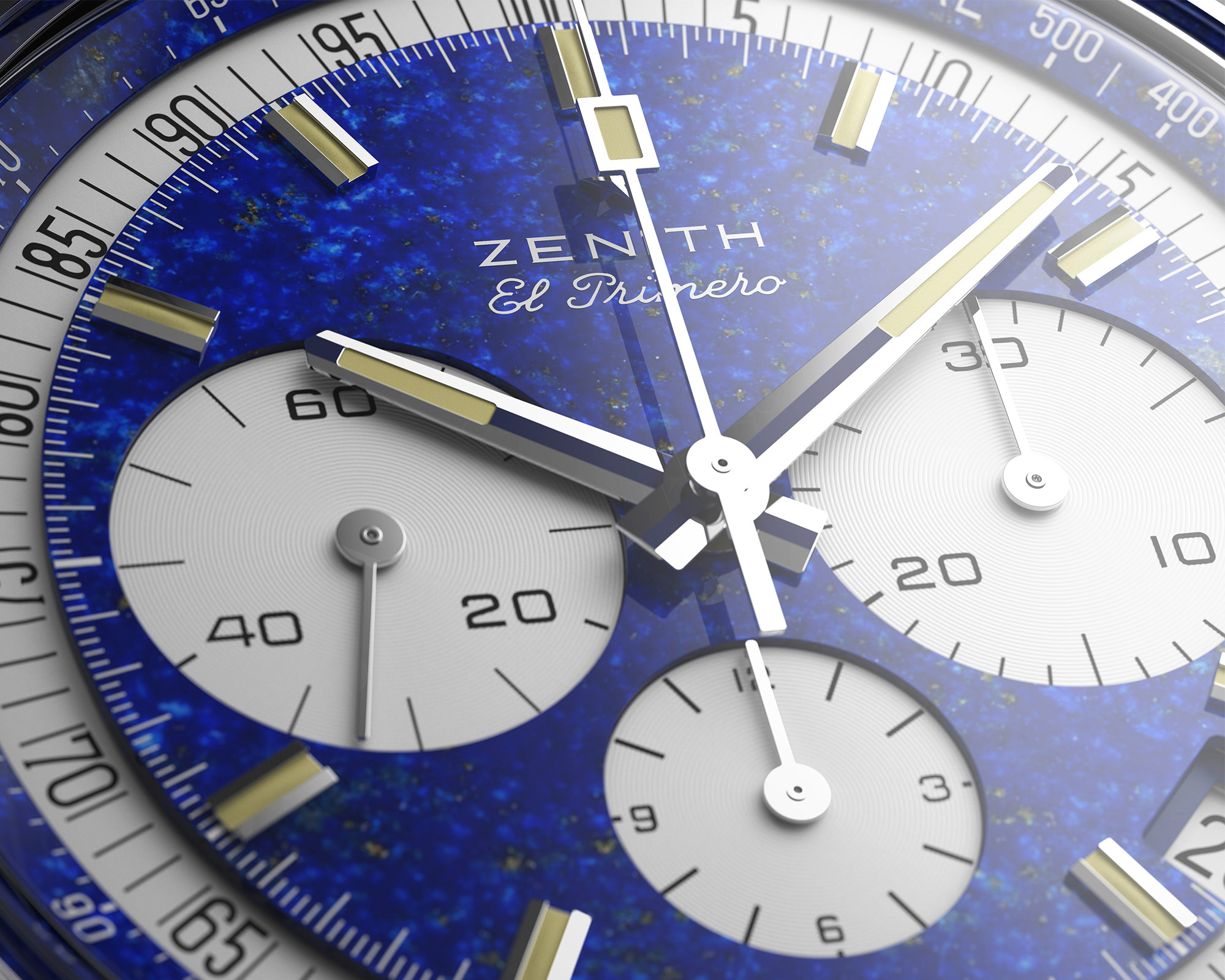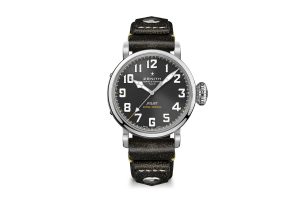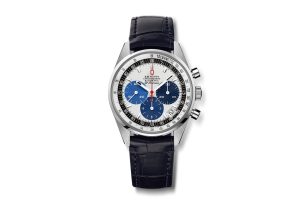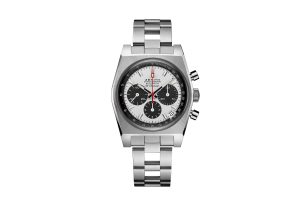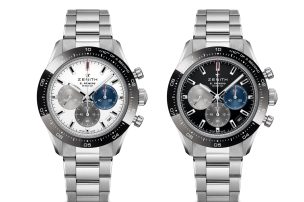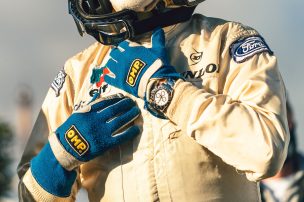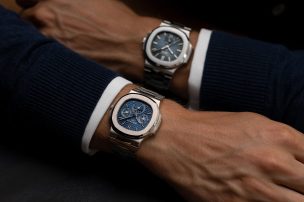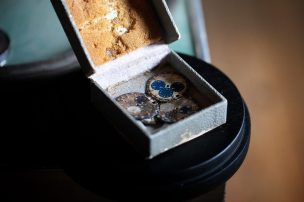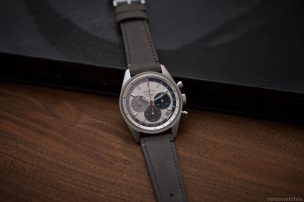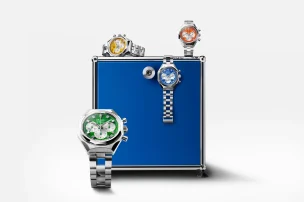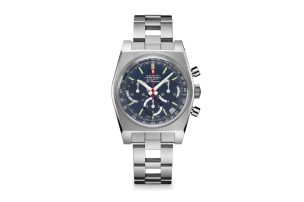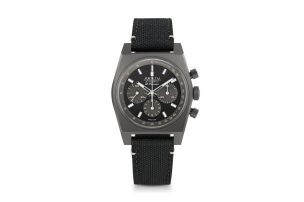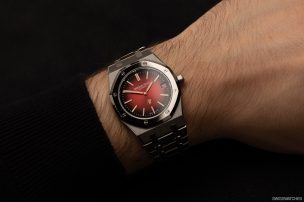
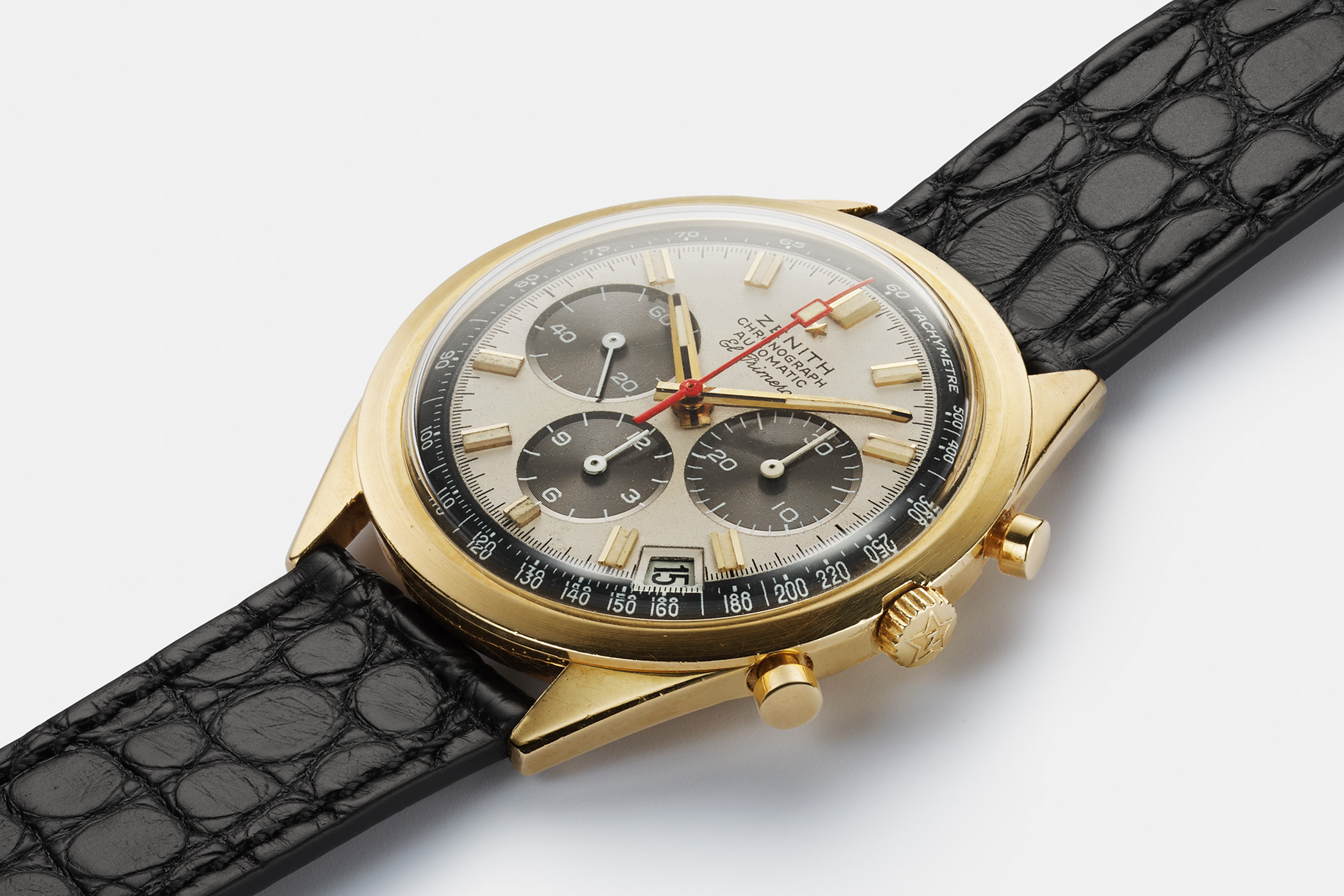
The Ultimate Guide to Zenith’s El Primero
Most of the young watch collectors of today are looking for the names of famous watch models. This is perfectly fair, given these names were created to be remembered. But anyone who takes a closer look at superstars such as the Cosmograph Daytona by Rolex, the Nautilus by Patek Philippe, or the Royal Oak by Audemars Piguet, will quickly discover: there is more behind every great watch than good marketing – and at least one equally important movement, or often even a whole series of important movements. After all, the starting point for new watch designs has historically always been technological progress, which often only needed a new face as a second step.
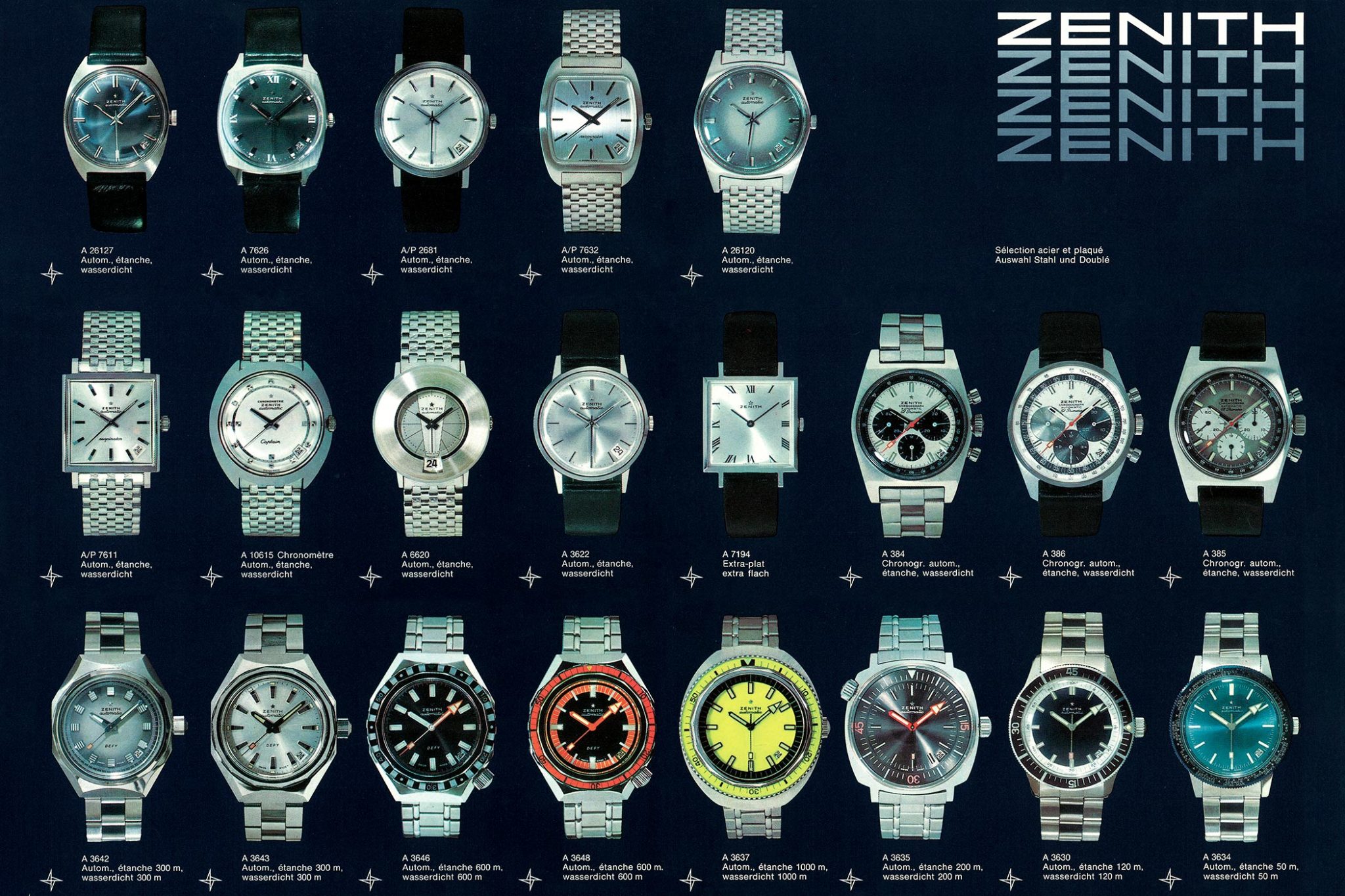
Credit © ZENITH HERITAGE
If you ask yourself which movement has influenced the entire mechanical watch world more than almost any other in the last 54 years, you will inevitably end up with the Swiss manufacture Zenith. It is certainly no coincidence that only in this case in mechanical watch history have the name of the watch and its movement become one and the same for many fans: El Primero. We tell the story of this famous watch line and its even more famous movement. Since what has become synonymous with a watch and a movement, was originally introduced as a line of watches in 1969, not a single watch or a movement.
Zenith: even the company name comes from a movement
Before we discuss the famous movement, our first lines are dedicated to the Swiss manufacture that created it. My colleague, Nico Bandl, has written down the history in a nutshell for Swisswatches Magazine. It only goes into more detail in the book by Joel Duval (Zenith – The History of a Star, published on the occasion of the company’s 150th anniversary in 2015), from which many of the historical details of this story are also taken and to whom special thanks are therefore due.
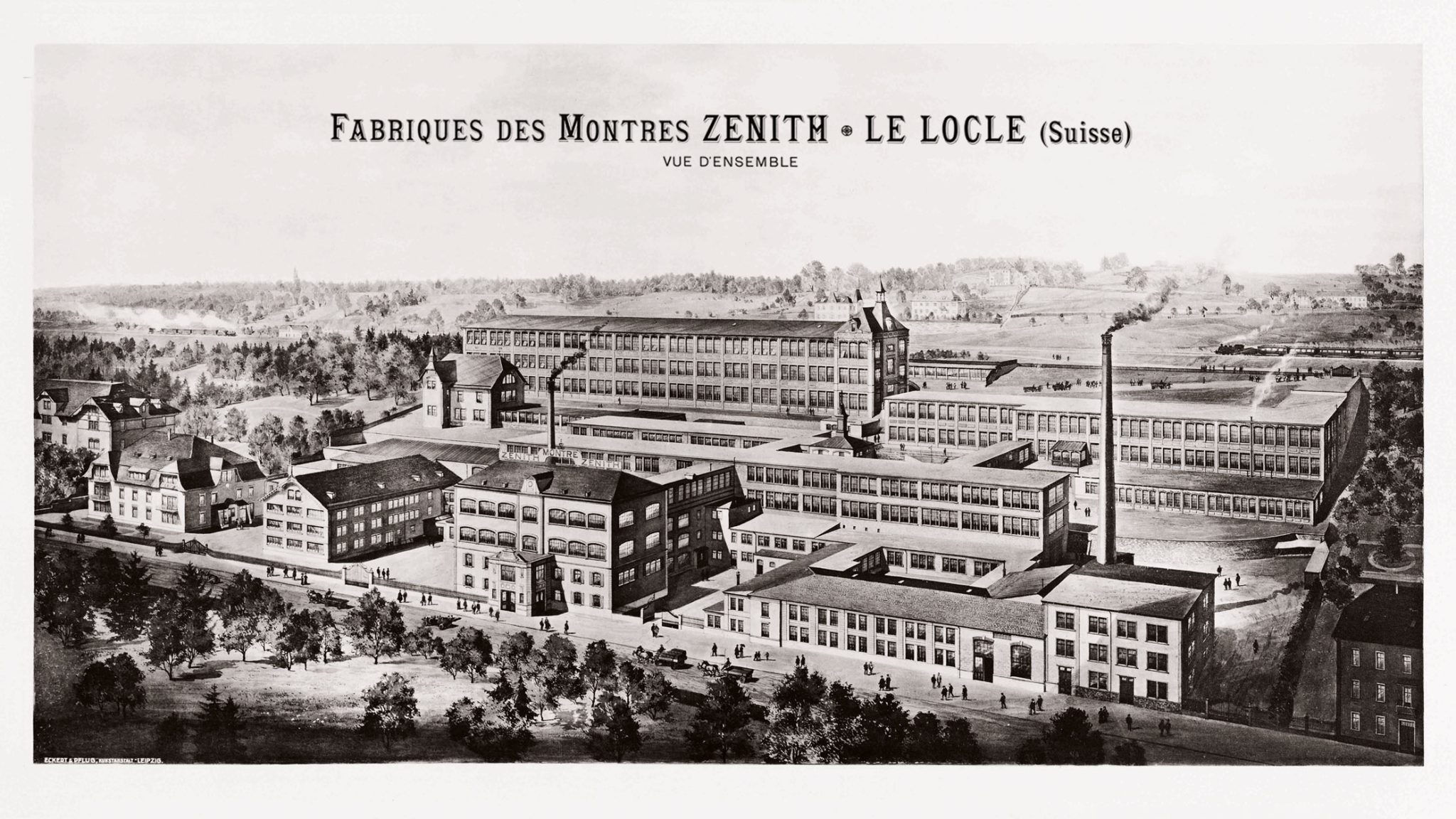
Credit © ZENITH HERITAGE
For me, not only after reading it, the most amazing thing about Zenith – if you take a closer look at its 158-year uninterrupted history – is that this brand is very high up today, but not yet quite in the ‘Zenith’ of collector brands, next to Rolex, Patek, AP and Co., where it actually belongs. This is a double opportunity for newcomers: to make their mark as collectors of tomorrow, and at the same time to profit from the coming rise. Anyone who still doubts this should read this story (and hurry, because prices are rising rapidly).
The name says it all
The company name Zenith is doubly associated with famous models and movements. The El Primero, introduced in 1969, is described here. But few know: the entire company, which Georges Favre-Jacot founded in 1865 in Le Locle in the Swiss Jura valley, was named after an earlier, equally successful line of models that were more than just a movement caliber: the celebrated ‘Zenith’ Pocket watches from 1897, which entailed different caliber variations, just like the El Primero after it. The renaming took place in the very year in which Georges Favre-Jacot left the company. Thirteen years earlier, he had introduced a pocket watch calibre that won a grand prize at the 1900 World’s Fair in Paris and went on to conquer the world.
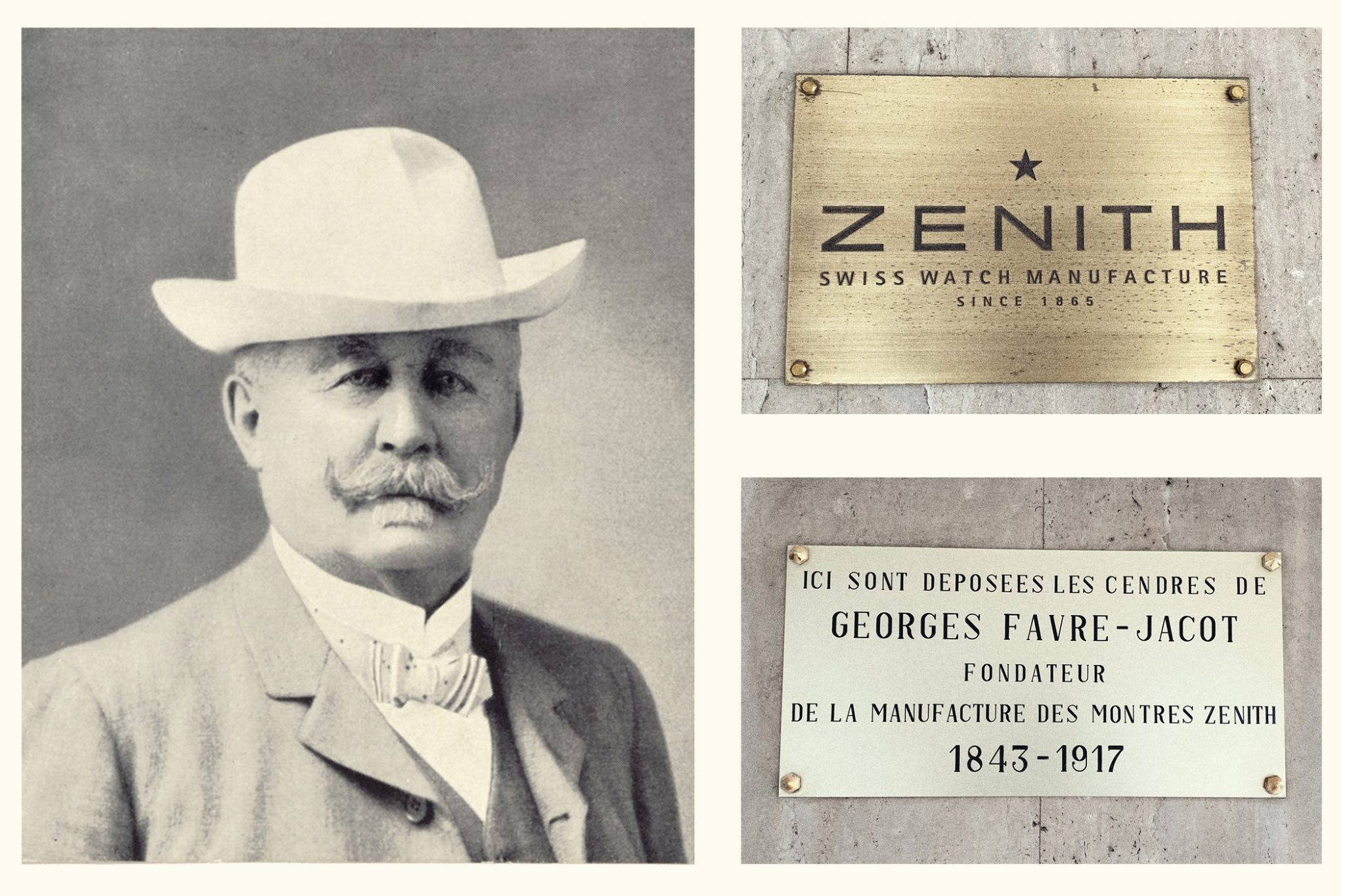
Speaking of prizes and triumphs, Zenith has always stood for the accuracy of its watches and movements. To date, it can boast the incredible number of 2333 chronometer awards, 1565 of which were first prizes. This is still an absolute record among Swiss watch manufacturers and simply impressive. At least as impressive as the equally unimaginable number of more than 300 patents and 600 watch movements developed by Zenith to date, which is probably only surpassed by Jaeger-LeCoultre, a brand that, however, in the early years was primarily known for equipping many third-party brands with its movements as a supplier.
Looking back, for me, the significance of the brand was summed up by none other than the current Rolex CEO Jean Frederic Dufour (in a 2012 interview with Ivan Radja as the then CEO of Zenith with Worldtempus): ‘Founded in 1865, the brand was one of the first to embed its craftsmanship in an industrial framework, along with Omega or Longines. I could tell you for hours what Zenith was at the beginning of the 20th century. It was even the company that brought electricity to Le Locle. It accompanied the rise of the railway and the aircraft industry. After his Channel crossing, Louis Blériot recommended the Zenith altimeter!’
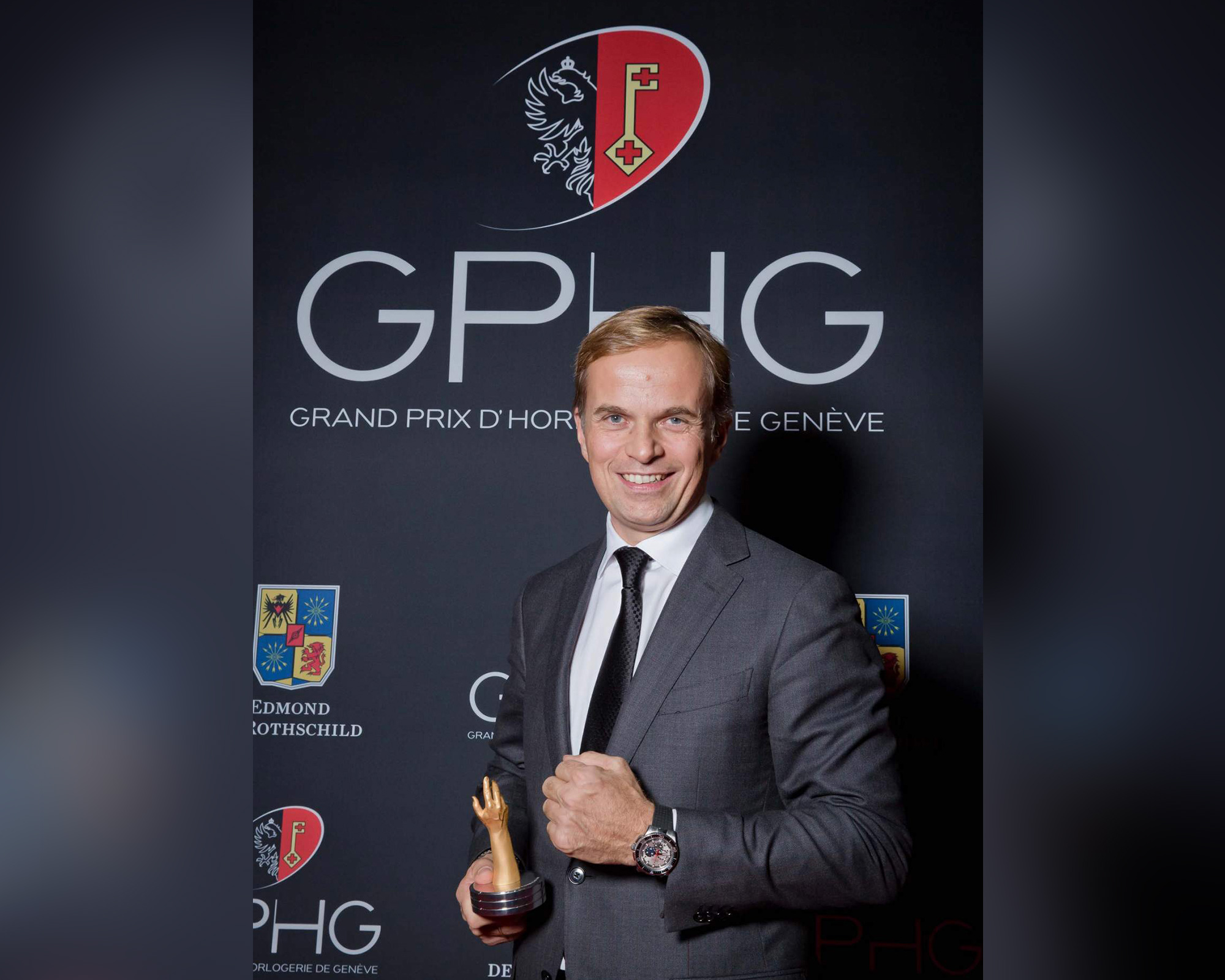
Credit © Fondation du Grand Prix D’horlogerie de Genève
Credit where credit’s due
So why does Zenith still not get the full attention of the collector community that this brand deserves? Perhaps it is mainly because the company ran into economic difficulties at the very time when its most famous baby was born, then fell into different hands again and again, until the true potential was recognised by the LVMH Group in 1999, which took over the manufacture and has been carefully but steadily building it up ever since. Who should know better how to build a brand than one of the richest people in the world, Bernard Arnault: especially with luxury products, continuity is key. Coupled with the right innovations and an awareness of its own history, Zenith could therefore rise to become the new collector’s star in the watch firmament in the coming years. The brand already has the star in its logo, and it has been impossible to imagine the hearts of connoisseurs without the brand for decades anyway. The reason for this lies in the history of the most famous movement in the world.
The genesis of the world’s most famous movement
Although most assume the year 1962 is the starting point of the house’s most famous watch, experts go back a little further. In the mid-fifties, Zenith watches were undisputedly at the forefront of watchmaking. In 1954, the famous Calibre 135 had already won the accuracy competition at the Neuchâtel Observatory for the fifth time in a row.

Credit © ZENITH HERITAGE
After the end of the Second World War, production had increased by 75 per cent. The pilot watches had earned an excellent reputation during the Second World War. They were now looking for future partnerships in a world where more and more Swiss competitors were merging into holdings and groups. At the end of 1958, the small watch company Martel Watch Co. asked for a collaboration, which Zenith gladly accepted, as Zenith had already been collaborating with this company for years in the domain of wristwatch chronographs.. After only a short time, it was clear that the Martel company and, above all, its know-how were needed: from 1959, the Martel Watch Co. was acquired by Zenith, and thus became Zenith Ponts-de-Martel workshops. These Zenith workshops manufactured both 3-hand watches and chronographs. This Zenith laboratory and workshop were to be set up to form the very team that would produce the world’s first automatic chronograph movement a good decade later.
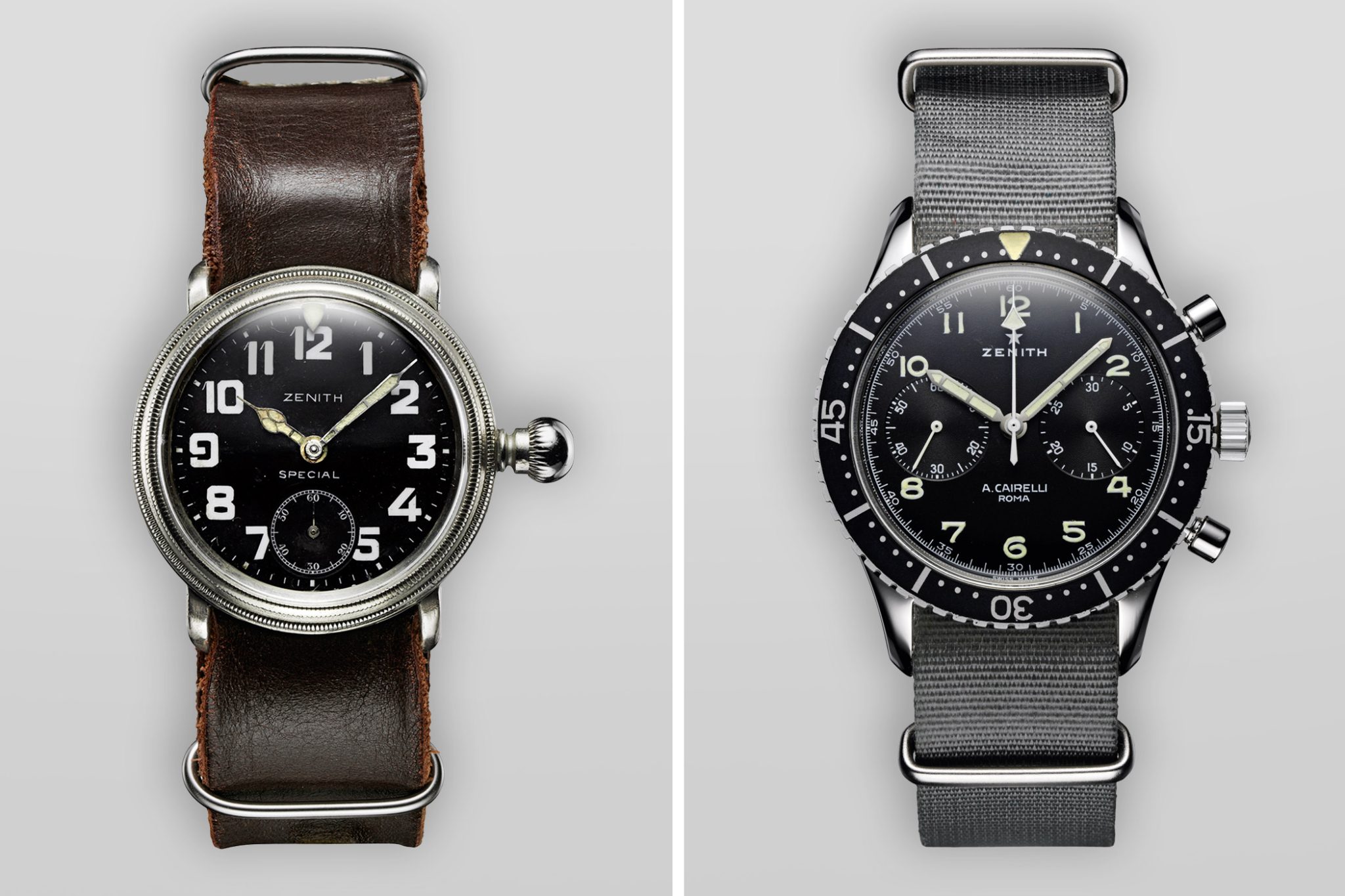
Credit © ZENITH HERITAGE
No surprise for the 100th anniversary
Three years later, in 1962, the management of the time began to think about the company’s upcoming 100th anniversary in 1965. Zenith’s president had a feasibility study drawn up for a self-winding mechanical wristwatch chronograph.
Under the direction of Raoul Pellaton, the specifications were written: AS if the challenge itself was not great enough – no Swiss manufacture had ever mastered this complex undertaking before – it soon also had to be a high-speed oscillating chronograph with 36,000 vibrations per hour! That was not all. As Manfred Rössler lists in detail in his book, “El Primero – der Chronograph”, it was not allowed to be a modular chronograph, i.e. a hand-wound chronograph with a winding module, because the height was to be limited to 6.5 millimetres to become the thinnest chronograph on the market. Finally, it was also required to be able to measure tenths of a second, twice as accurately as conventional chronographs of the time! At the same time, it was also to be the fist ‘modern’ chronograph ever: Instead of filing the functions (as was done traditionally), the El Primero chronograph’s components were to be stamped with such a precision that one only had to assemble it, and it would work directly. One thing quickly became clear to the engineers: it would not be for the company’s 100th anniversary; all in all, the development took seven long years and rumours soon began to circulate that they were not the only company intending to build such a watch.
A competitor catalyses effort
When rumours began to circulate in the Swiss watch world in 1967 that a strong collaboration of Breitling, Hamilton-Büren, Dubois-Dépraz and Heuer-Léonidas was also working on a ground-breaking automatic chronograph, the news spurred Zenith’s engineers to want to be the first with the first (aka the name El Primero) for what they had been the first to start developing in the swiss industry. Internally, by the way, the project bore the rather plain name 3019 PHC, which is the name of the caliber. El Primero was the name of the line which would host this caliber at Zenith; Movado itself, the partner company Movado, with whom they had forged an alliance since 1967, was to use the name Datron HS 360 instead of El Primero to distinguish the two identities (even though Datron HS 360 were equally manufactured at Zenith).
However, it was not due to the engineers that this race was won so narrowly, but much more to the management, which had to struggle with completely different challenges: unimaginable today in the field of luxury watches, it seemed perfectly clear to the industry at the time that, even when the rise of the quartz watch could not be forseen, the management efforts indeed were to be the first to introduce this innovation in the industry of watchmaking, and not let competitors (with additional modules instead of completely integrated automatic device) get past them on the finishing line. The quartz watchof which the first was fatefully presented in the same year as the movement of the El Primero, would change completely the game from then on . So – was the world even ready for a mechanical automatic chronograph?
One month makes a world of difference
On 10 January 1969, the time had come: four weeks ahead of the competition, Zenith proudly unveiled its watch and movement: El Primero, ‘the first’. Its movement was not only 1.2 millimetres thinner than the Calibre 11 revealed by the competition, but the movement, which had also become famous for the square TAG Heuer Monaco, only had a micro rotor and performed 19800 vibrations per hour. The press was unanimous: they celebrated the El Primero. Meanwhile, the competitors were looking for weak points for the then radically new approach. Was the dry lubrication system based on molybdenum sulphite durable enough? Did the bearings withstand the higher pressures? Yes, they did.
A young sales agent in Zenith of the Benelux wanted to put an end to the criticism once and for all and, in cooperation with a Belgian newspaper and Air France, placed an El Primero in the landing gear well of a Boeing 707, where it had to survive a seven-hour long-haul flight between Paris and New York – at temperatures ranging from 4 to -62 degrees Celsius and air pressure at 10,700 metres. The result: the El Primero was not the least bit bothered. Also a fine way to show its superiority to any quartz watches of that time, which wouldn’t have resisted the drastic temperature difference.
A wave of demand
All the more impressive was the wave of demand that now reached Zenith. For collectors of the first series, it might be interesting to know that Zenith did not opt for a standard model, but rather for small series or line of very different first designs, chronologically: The El Primero saw the light of day in gold and steel solely upon its launch followed by titanium at the beginning of the 1980s and then a few gold-plated models but only far later, at the end of the 1980s . And there is no end in sight to this day. At 54 years, this watch also holds the record for the longest continuously sold chronograph in watch history. A total of 21 (!) watch brands used this movement at least occasionally, including Rolex, Movado, Parmigiani, Tag Heuer, Ebel and Tiffany. Since the takeover by the LVMH Group in 1999, however, only the in-house brands are allowed to use this calibre, including above all Louis Vuitton in its Tambour, which is currently celebrating its 20th birthday.
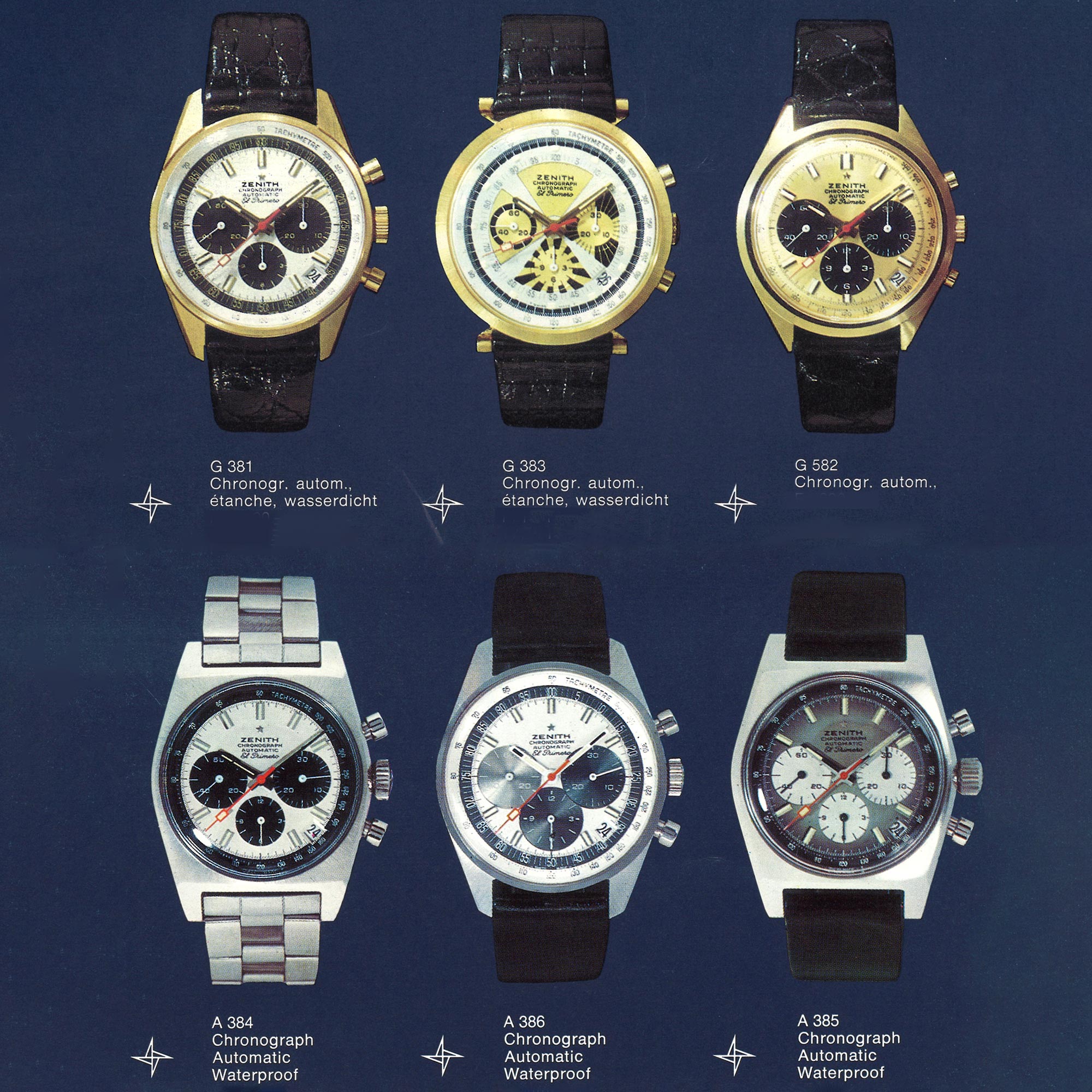
Credit © ZENITH HERITAGE
Number of units in the early years
If you take a closer look at the overview in the above-mentioned El Primero book by Manfred Rössler, two things stand out. Firstly, there are exactly 41 references in the period from 1969 to 1976, a lot for such a short period of time, which makes it clear that there were various models for the launch of the movement, but not the one model. Or maybe there was? The next paragraphs will try to find out which El Primero is the most iconic. These references, 12 of which were demonstrably launched in the first year, include a total of around 28,500 watches. That may seem like a lot, but by today’s standards it is nothing. Just for comparison: Rolex builds about one million watches – per year. It is also not known how many early El Primero models have survived the last 50 years in good condition. Under the keyword Zenith El Primero, the world’s largest second-hand watch exchange, Chrono24.de, found 2,084 results at the time of this writing, of which only about ten per cent were from before 1999: exactly 224 watches. If you narrow it down to the first, important phase from 1969 to 1975, there are just 95 hits left, as I said, without regard to quality or the accuracy of the information. But this platform is always a good point of reference.
A heroine called A386
One of the bestsellers of those years was the reference A386 with a steel case, silver-plated dial and subdial counters in different colours. 4,500 examples of this watch were made. Why is this watch so important? Because it was the only one with a design feature that has become the second trademark of the manufacture, along with the star in the logo and the second hand.
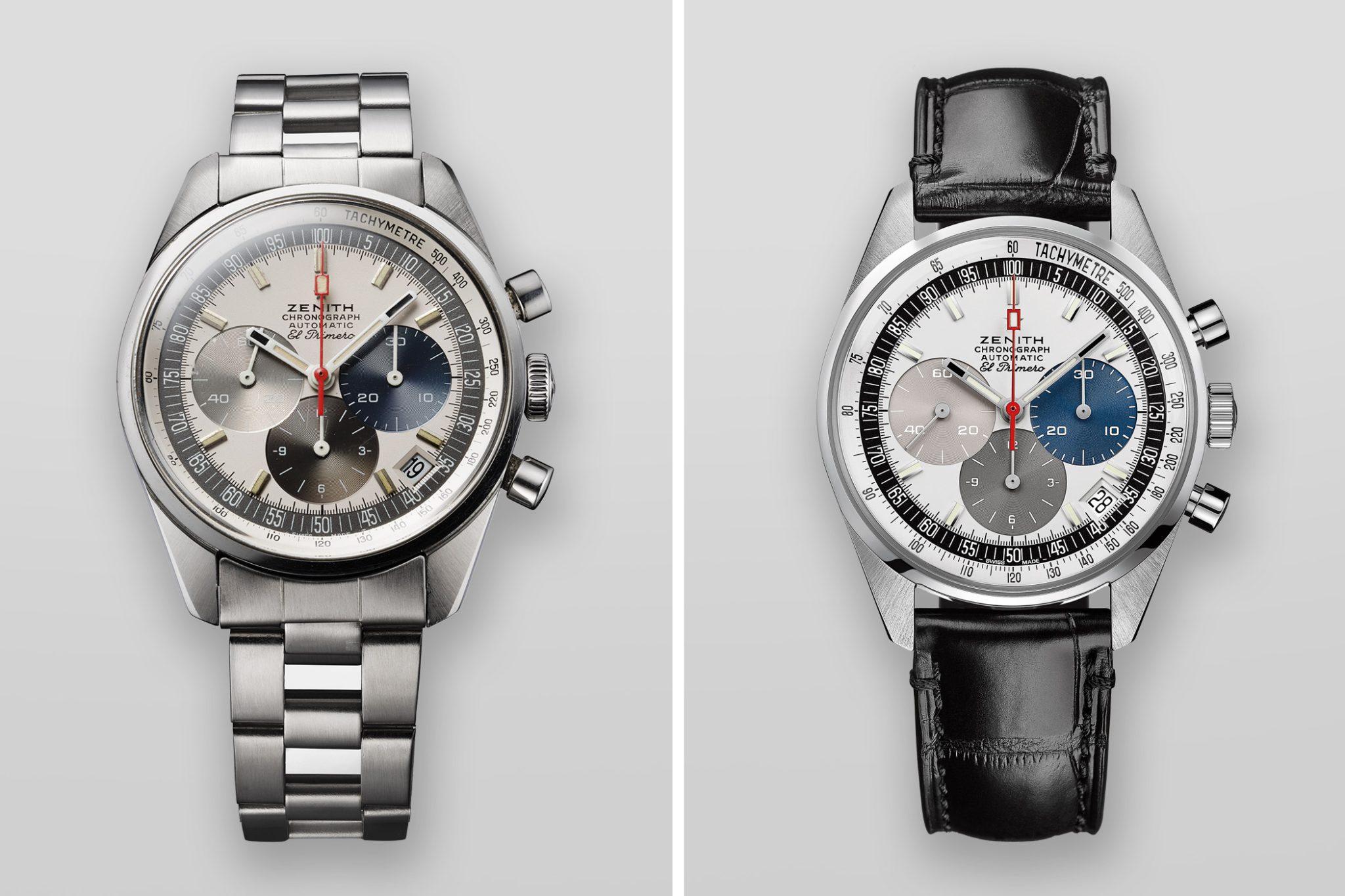
Credit © ZENITH HERITAGE
The design of the dials – uniquely multicoloured
Light grey, blue, anthracite. The three colours of one of the first series of the El Primero from 1969 have become true symbols of this icon. This is because the El Primero not only housed the most precise chronograph movement of its time, but also changed the view of modern watch design. It represents the first break with the design codes of the 1960s –predominantly monochrome dials and round watch cases – and elegantly displays the three counter colours that were to become its trademark. A light grey for the seconds, a strong blue for the minutes and a deep anthracite tone for the hours recall the brand’s constant effort to make visible the utmost precision by emphasising precisely these three timekeeping parameters – an exception at the time, when chronographs’ counter featured usually one single colour.
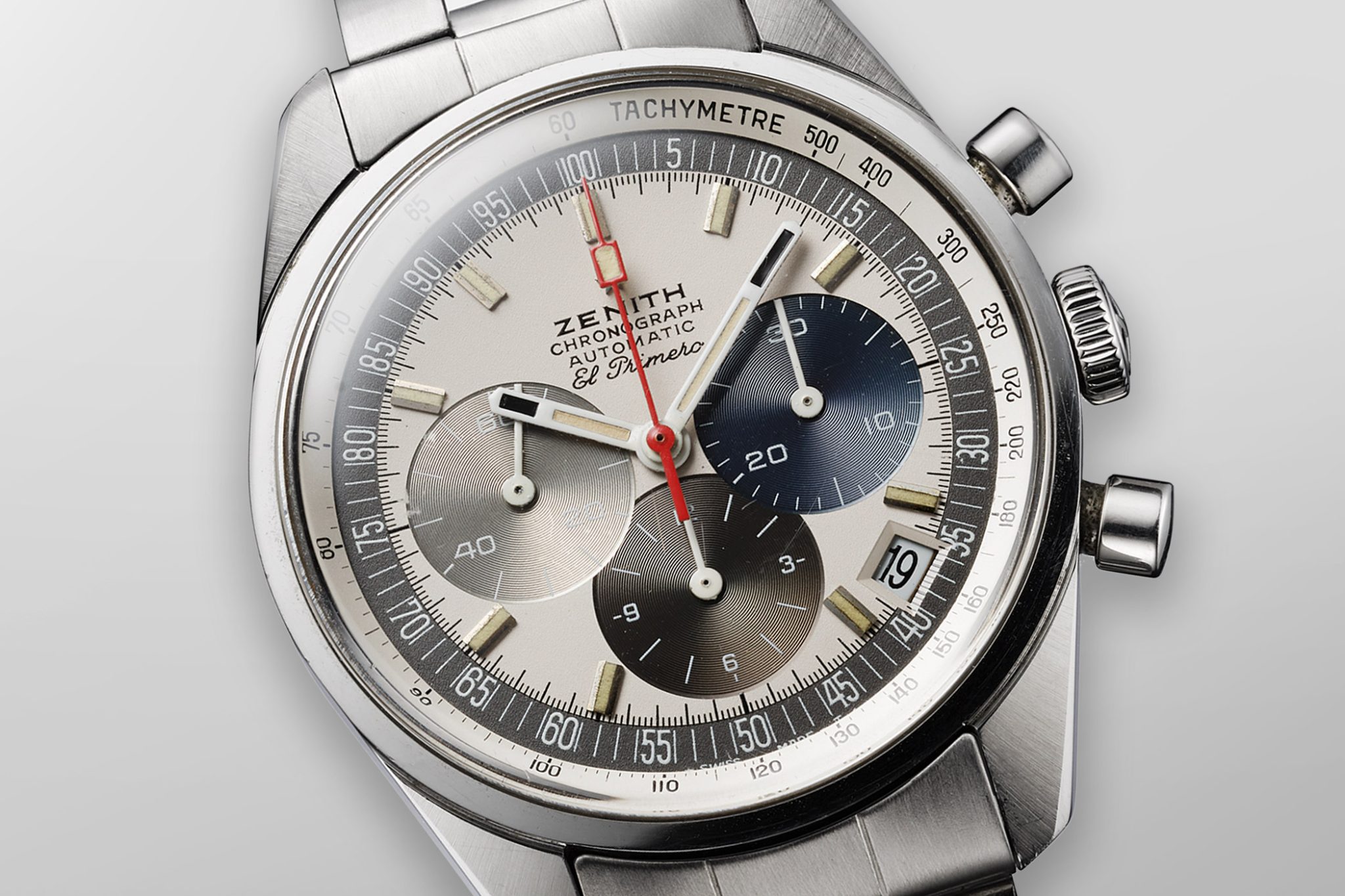
Credit © ZENITH HERITAGE
Zenith has done well to elevate this model to the status of icon. And it is likely that it will be this model that will win the race with collectors in the future. In the Zenith anniversary book from 2015, seven other references are shown, which on the one hand can be found in modern case and model variants of the house, and on the other hand now exist as Revivals, not exact reissues (to distinguish them from the original models).
Rare references from the early years
Even though the Zenith Heritage Department thankfully pointed out to us that all unit numbers are only approximations and not finally confirmed, we still want to reveal what we know here, simply because these models are so rare: Firstly, there is reference G381, an 18-carat gold chronograph with chocolate-brown subdial counters (actually black originally but many of them have turned tropical, but this never was their original colour), of which 1,000 were made from 1969 to 1972. Then there is reference G582, also gold, of which only 600 exist with a gold-coloured dial. Then there is the reference A384 in stainless steel, 3850 of which were produced, with a very angular case, which is now on the market as the Chronomaster Revival. With the references A781 (red dial, steel case, produced 1,000 times), Zenith introduced the now important Defy designs in the El Primero line, which is also used for one of the most sought-after models of the time: the so-called El Primero “ESPADA” of reference A7817 with day, date, month and moonphase was built only 1105 times between 1972 and 1975 and also represented the first triple complication variation of the El Primero. For the sake of completeness, the two prototype series of 10 pieces each of the Chronomaster series with full calendar and moon phase should also be mentioned, although they do not bear numbers and were introduced in 1970. since they never appeared in catalogues from the time.
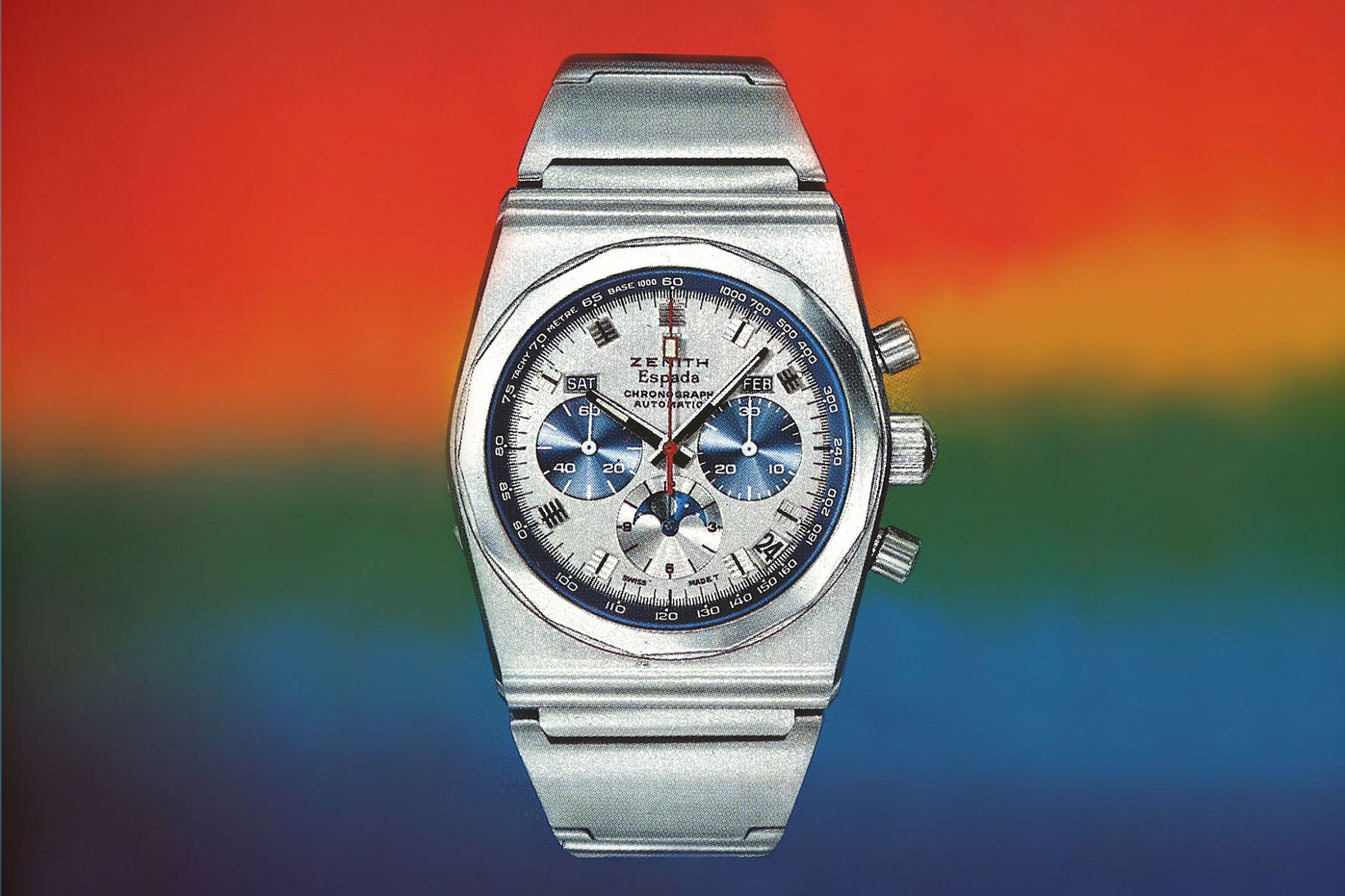
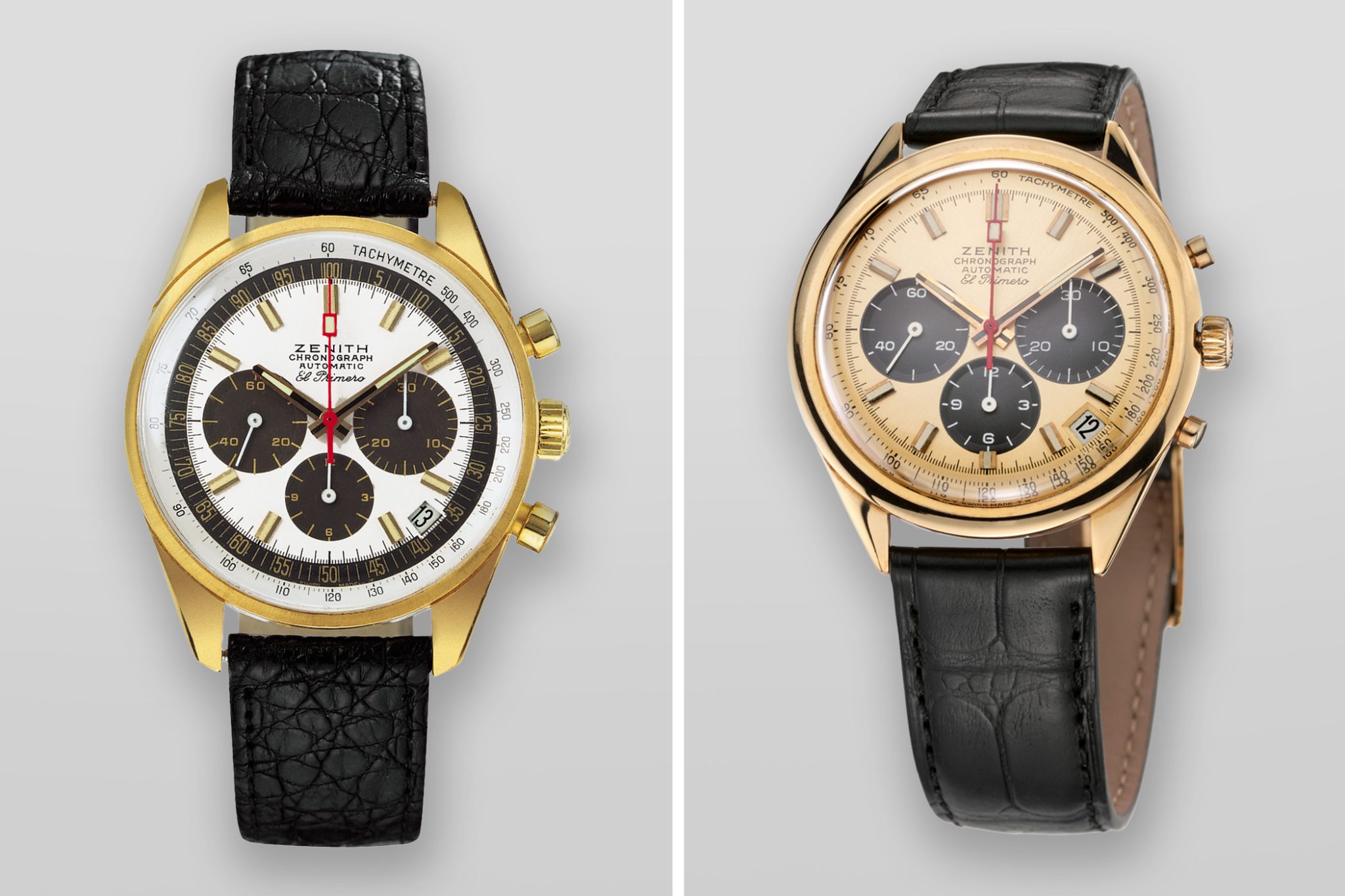
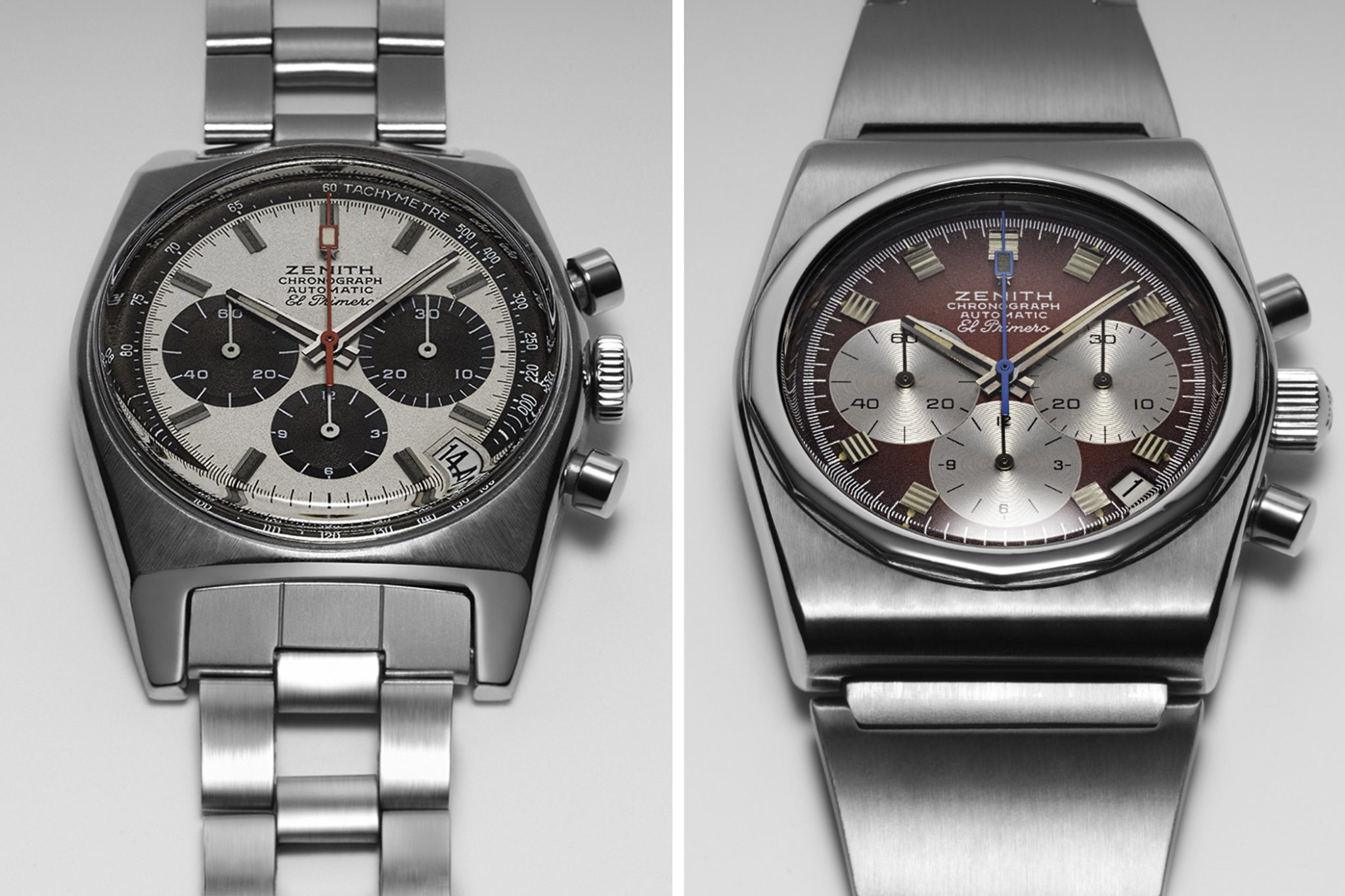
Credit © ZENITH HERITAGE
The last references mentioned here, the A787 with 105 pieces in steel and the gold reference G7810 with 250 gold pieces, should only be mentioned here because Zenith has currently reissued exactly this case type with its Defy Revival Model a 250-piece new edition, albeit as a classic Defy 3-hands automatic watch without chronograph function having served as an inspiration for the later Defy-Skyine line.
The shock of 1975
Unfortunately, progress often overtakes itself, which is easier to understand for readers of the digital age than for older generations, since it is much more common today for a genuine innovation to seem worthless within a few years (remember Nokia mobile phones or the website Second Life?). For even if the first beginnings of the El Primero looked promising, the watch market had changed worldwide. From 1969, the need for accurate timekeeping was also met by quartz watches, whose prices fell just as quickly as their accuracy increased. The most famous movement in history almost ended up as the most expensive flop in the world of mechanical watches: in 1975, production was stopped by decree from the USA. The shocking news came from the USA because Zenith had been taken over by the Zenith Radio Cooperation in the USA in 1971. The Americans regarded mechanical watches as obsolete and considered the machines, movements and tools to be obsolete as well.
6 months of work in return for immortality
It is indeed thanks to the conviction of one man, watchmaker Charles Vermot, that the story of the El Primero nevertheless became one of the greatest success stories in watchmaking history, even if the world had to wait almost a decade for it (9 years to be precise). From the beginning of his career, the watchmaker worked for the brand and was not above writing to Americans himself to protest when the shocking news reached him. The decision to stop production had been taken so abruptly that huge numbers of unfinished calibres were in the warehouse, along with their data sheets. He was unsuccessful in his request to get a dedicated space to insure the conservation of the tools and plans needed to possibly relaunch the El Primero.. With the liquidation of the manufacturing plant in Pont-de-Martel, Vermot took a lonely but all the more courageous decision: he began by meticulously archiving all the production processes and, above all, hiding the 150 punching presses that were needed to produce the original movement parts. To do this, he had all the production documents, machines, plans and production tools walled up in the attic of the factory in Le Locle, assisted by his brother, also a Zenith employee. A horological treasure that had to be unearthed at some point – but when?
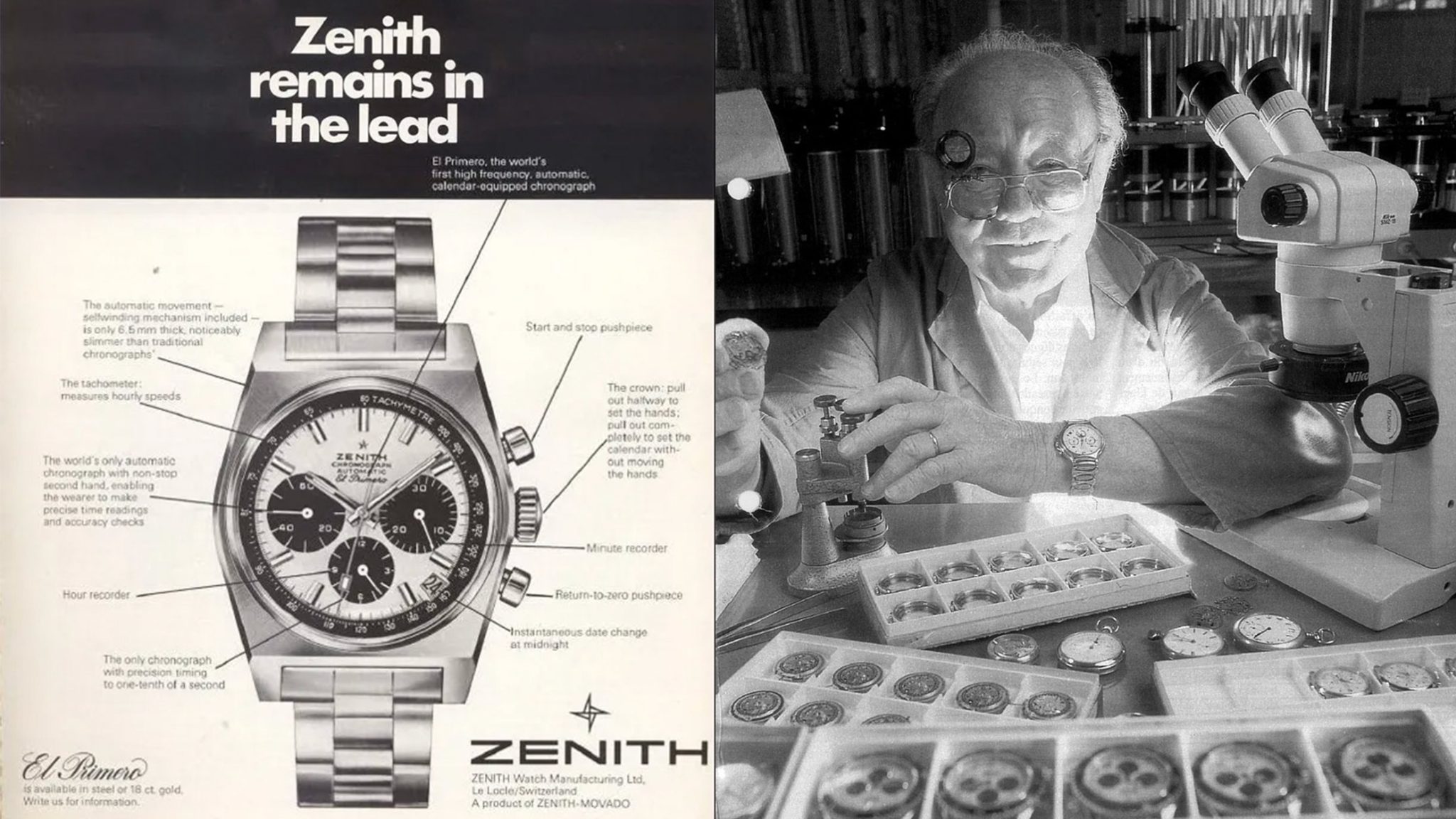
Credit © ZENITH HERITAGE
Rebirth – in another icon
So, while tool parts worth many millions of euros today were dozing away in the upper room of the manufacture, a lot was happening on the floors below. In 1978, Zenith returned to Swiss ownership. In 1984, the time seemed right for a comeback: 15 years after its launch, the revival of the mechanical began in Switzerland. It was, among others, the president of Ebel, Pierre-Alain Blum, who learned in 1981 of the existence of unfinished El Primero movements and wanted to use them for some of his watches. Specifically, it was about El Primero movements with moonphase, the calibre 3019 PHF. When he learned that there were other movements, he also bought the 3019 PHC movement without moonphase directly from Zenith. Why was this possible? At Zenith, several thousand such movements were waiting to be completed at the time. Old movements don’t just have a half-life. For Ebel, this move was clever because producing its own chronographs was considered far too risky at the beginning of the comeback of mechanical watches. Of course, Zenith did not have the means for a chronograph production line at that time to guarantee the assembly of the movements; they worked together with the supplier of competitors, Lémania. For a good three years, Ebel was supplied with an increasing number of chronograph movements, which did not go unnoticed by the rest of the watch world. In watchmaking, Switzerland is a village where nothing ever stays hidden from others for long.

Credit © Antiquorum
Rolex – a giant needs help
Through an intermediary, a member of the Wilsdorf family, the owners of Rolex long before Rolex became a foundation, was contacted. Rolex wanted to revive its Daytona model, which at the time was powered by the robust but ageing hand-wound Valjoux 72 calibre. For Rolex, the Zenith movement was interesting in two respects: it had automatic winding, and was thin enough to fit the aesthetics of Rolex cases (thanks to the fact that it’s complication and oscillating mass had been designed to be integrated with the rest of the movement from the start). Now the elaborate development of yesteryear was paying off! It also had the subdial counter arrangement in the same position as the existing Daytona at 3,6 and 9 o’clock.
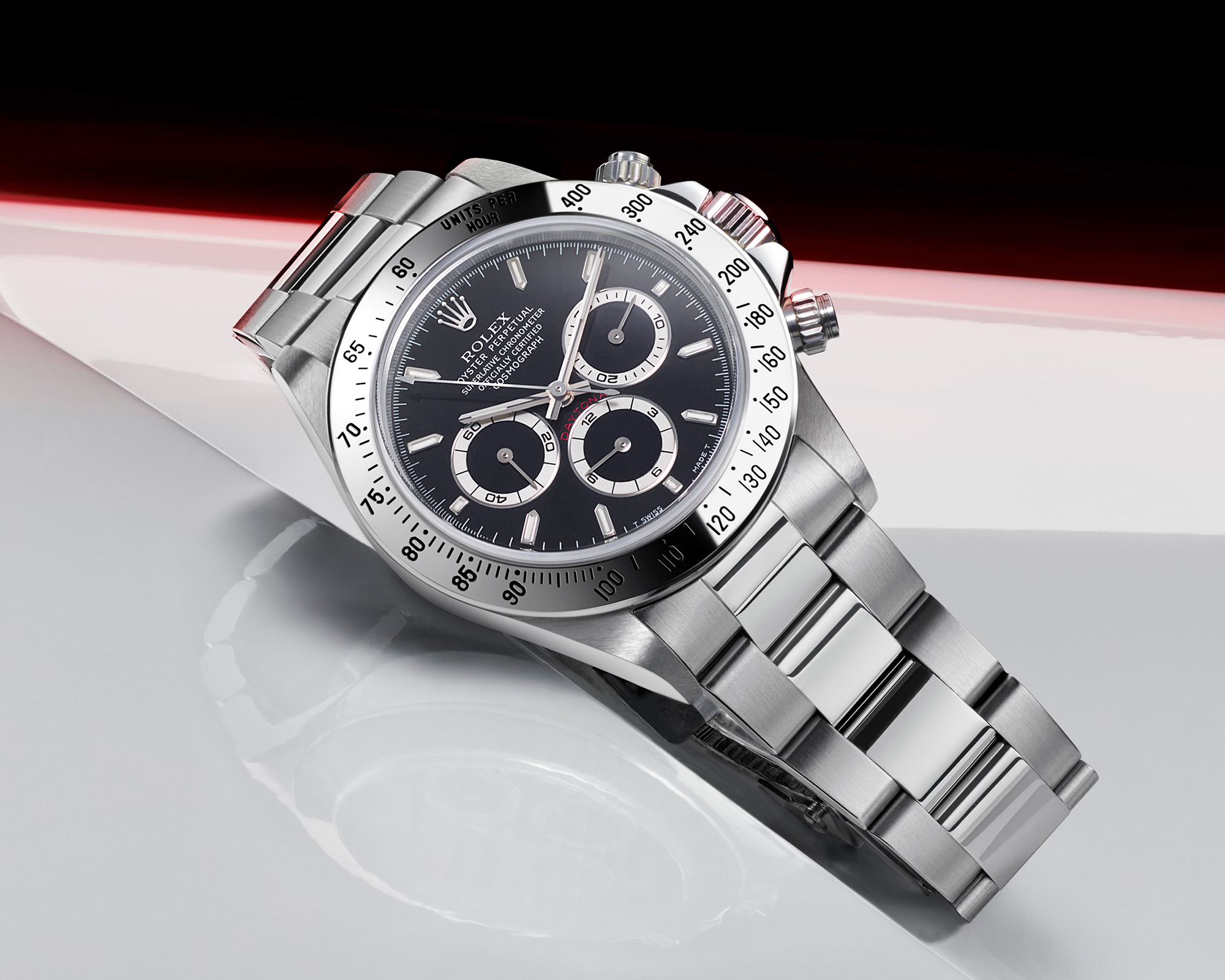
Credit © Rolex
However, Rolex was also initially sceptical about the high-frequency of the El Primero in terms of longterm durability. Everything revolved around longevity and low after-sales costs for the Genevans, as the number of pieces at Rolex was already very large at that time – an important argument. And above all: Rolex was used to working with the 4 hz alternance of 28’800 vph in terms of after sales service.
The golden hour of Charles Vermot
In 1984, a press for factory parts cost around 40,000 Swiss francs, so the more than 150 stamping tools needed to restart El Primero production would have cost around 7 million Swiss francs. It was unthinkable for Zenith to resume production and reproduce these tools. Now they remembered the former rebel Charles Vermot and were relieved to find that he had done a great job: his incredible meticulousness of stockpiling helped Zenith to become a worthy contractual partner for Rolex. In 1984, they signed a supply contract for 10 years. The hero of the time received a goldplated El Primero chronograph and a trip to the USA,where he chose to go himself. As a matter of fact, despite some people love to say these days, he received a little more than that over the years: He also had the honours of the Maison, with invitations to speak publicly, many dinner invitations with the direction, and so on, like the VIP he now finally was.The watchmakers at Zenith, on the other hand, had to roll up their sleeves and assemble a high-precision mechanical chronograph for Rolex, an extremely demanding customer. The movements were to be manufactured at Zenith for Rolex and then handed over to Rolex in Le Locle. Vermot showed them all the resources he had carefully preserved and documented so that the Technical Bureau could take it again from there.
What distinguishes the El Primero from the Rolex Daytona
Rolex decided to modify the El Primero movements to fit its own corporate habit. After all, he who pays the piper calls the shots. A few important changes were introduced, some of them patent pending. It was not only decided to omit the date but to keep the Zenith balance in Glucidur. Rolex also decided that instead of the regulating organ, the Microstella regulator should be installed, which Rolex used in most of its movements. The new, larger balance reduced the frequency to 28800 vibrations per hour, which also meant that the escapement system could be lubricated in the conventional way. The flat hairspring was replaced by a Breguet hairspring and the movement received a column wheel with more teeth. The flywheel mass of the winding rotor was changed as well. All this was done in Zenith’s own workshops.. But Zenith did not just assemble El Primero movements for Rolex after having retrieved their production tools: they relaunched the production of their own Zenith El Primeros (as complete watches), with the Zenith specifications (36000 instead of 28800 vph, the date, Zenith column wheel, flat hairspring, etc.) at the exact same time. The Heroine was back!
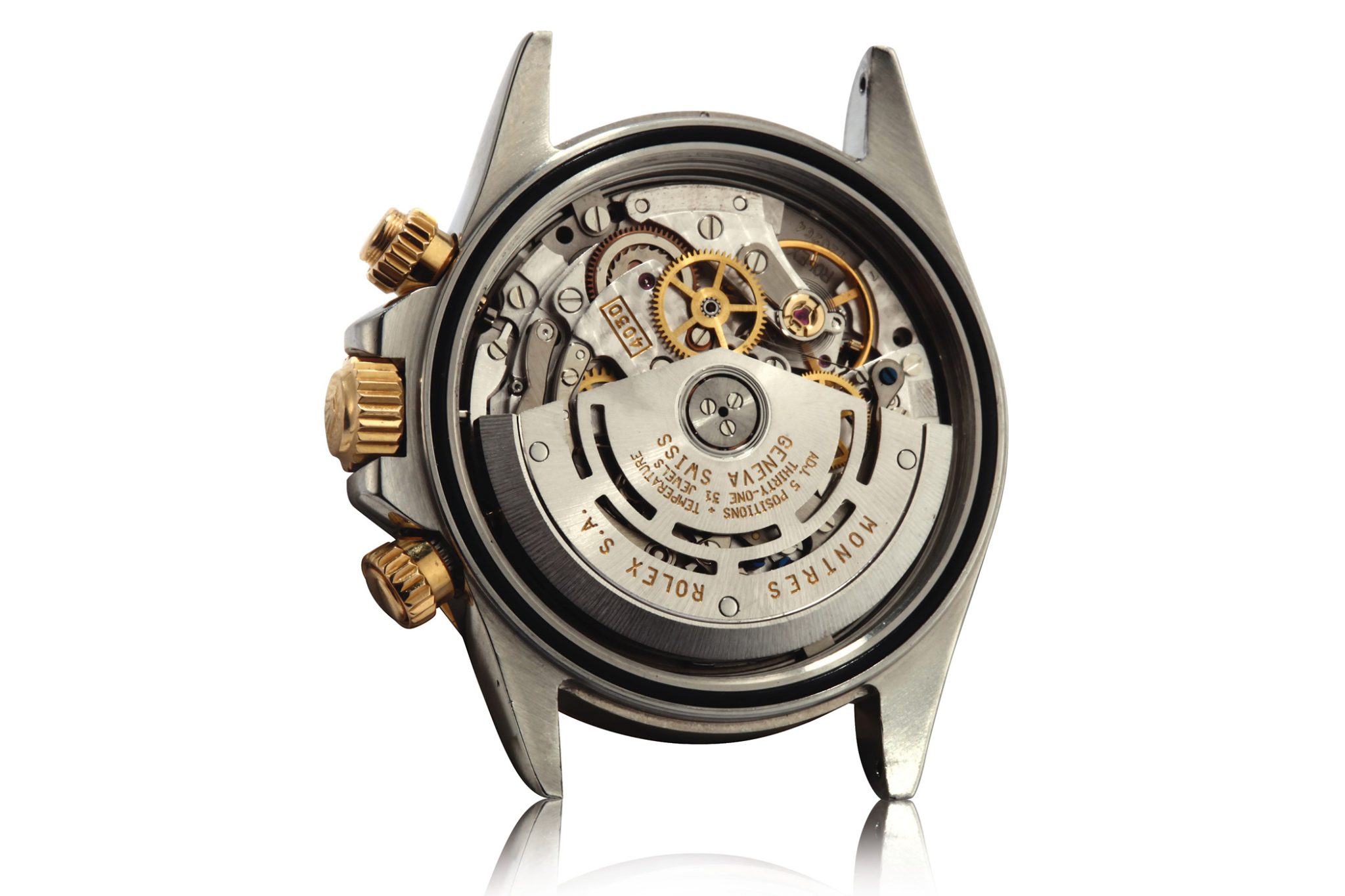
Everyone swears by El Primero – and then LVMH comes along.
The Zenith-Rolex collaboration started with the launch of the Rolex Daytona and reference 16520 in 1988 with the calibre 4030 and ended at the millennium with the launch of the first in-house calibre Rolex 4130 in reference 116500. As watch expert and auctioneer Aurel Bacs writes at Phillips: “Zenith was thus thrown into one of the largest chronograph producers in the world.” The portfolio of brands supplied at the end of the nineties and the very beginning of 2000 included everything of distinction: Panerai, Boucheron and Daniel Roth had reliable access to El Primero movements made in Le Locle. One of the better known but no less interesting comeback version of the early El Primero models for collectors is the stainless steel version that was created in 1988: Signor De Luca was a Zenith retailer, who worked under the supervision of Zenith’s head of the southern Italian market. It earned him the internal nickname “de Luca” collectors used to talk about this model and its different variations LucaLucaLucaIn addition to white and black dials, there were numerous variants that delighted fans of watches with the look of Rolex chronographs for almost six years, but with the knowledge that they were wearing a very special Zenith with an Italian touch. With the relaunch of the El Primero Zenith presented a first 100-meter water-resistant model with diver’s bezel and screw-down crown and pushers was created, followed in 1990 by a model with tachymeter scale (De Luca II) which presented an alternative to the Rolex Daytona.
The Nineties: Back to the roots
,. Collectors have simply called Rolex Daytonas ‘Zenith Daytonas’ since this era. Along with the ‘De Luca’, two of the equally important El Primero models of the pre-LVMH era should also be mentioned here: with the Rainbow, they introduced a collection in 1992 that was intended to keep up with Omega and Breitling. It was sporty and elegant with sapphire crystal, fixed diver’s and tachymeter bezels, and fitted with seals that made these watches reliably waterproof, thus meeting the taste of the times. The positive experiences of the De Lucca series were also incorporated into these models. From then on, the German press, in particular, celebrated the resurrected living legend. In addition to this, the decision was made in 1995 to launch the Chronomaster series, which paved the way towards the future even more clearly as a luxury line. These watches not only had a transparent screw-down caseback, but were aso all certified chronometers (and still are) by the Swiss chronometer testing agency COSC.
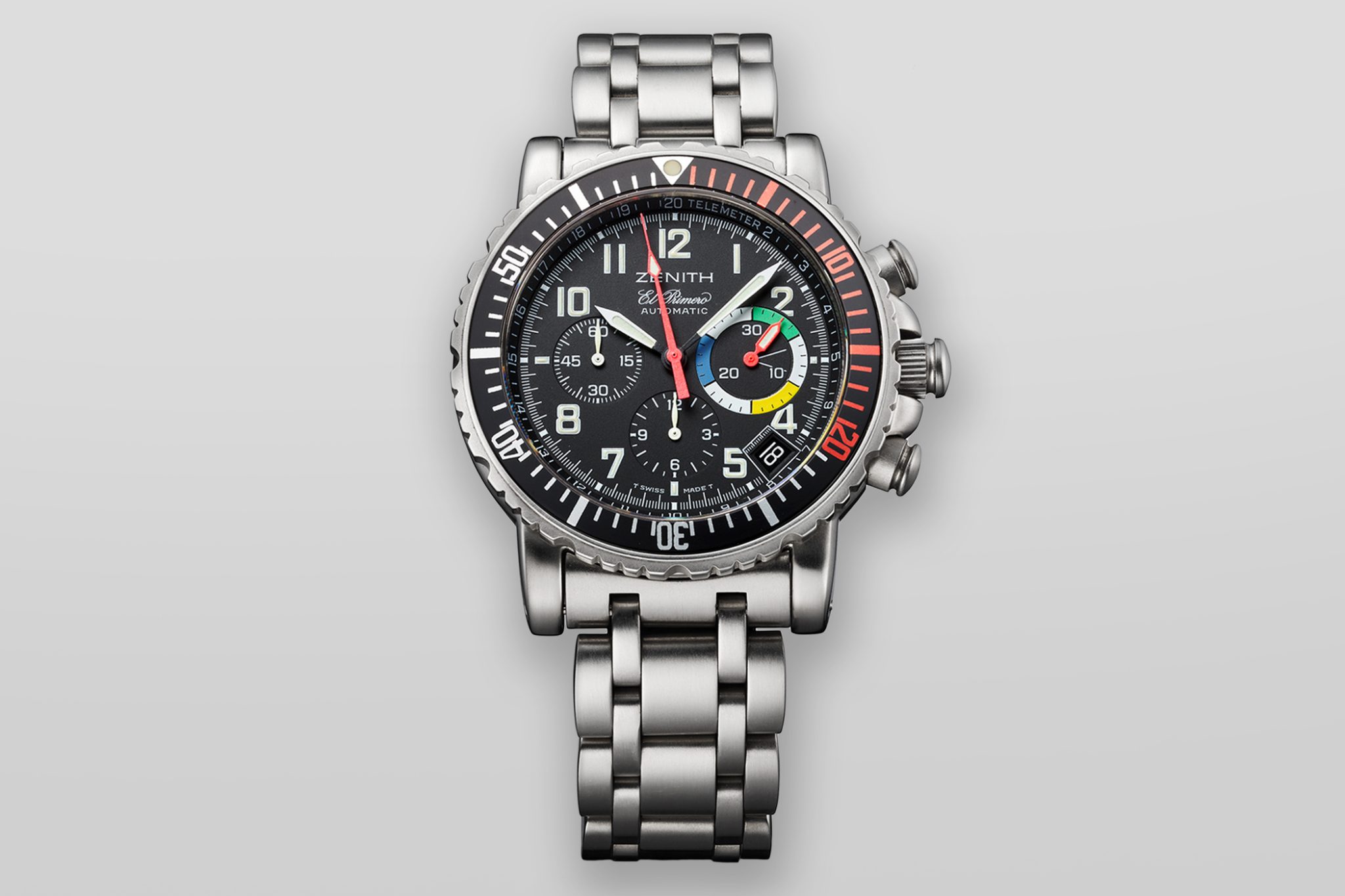
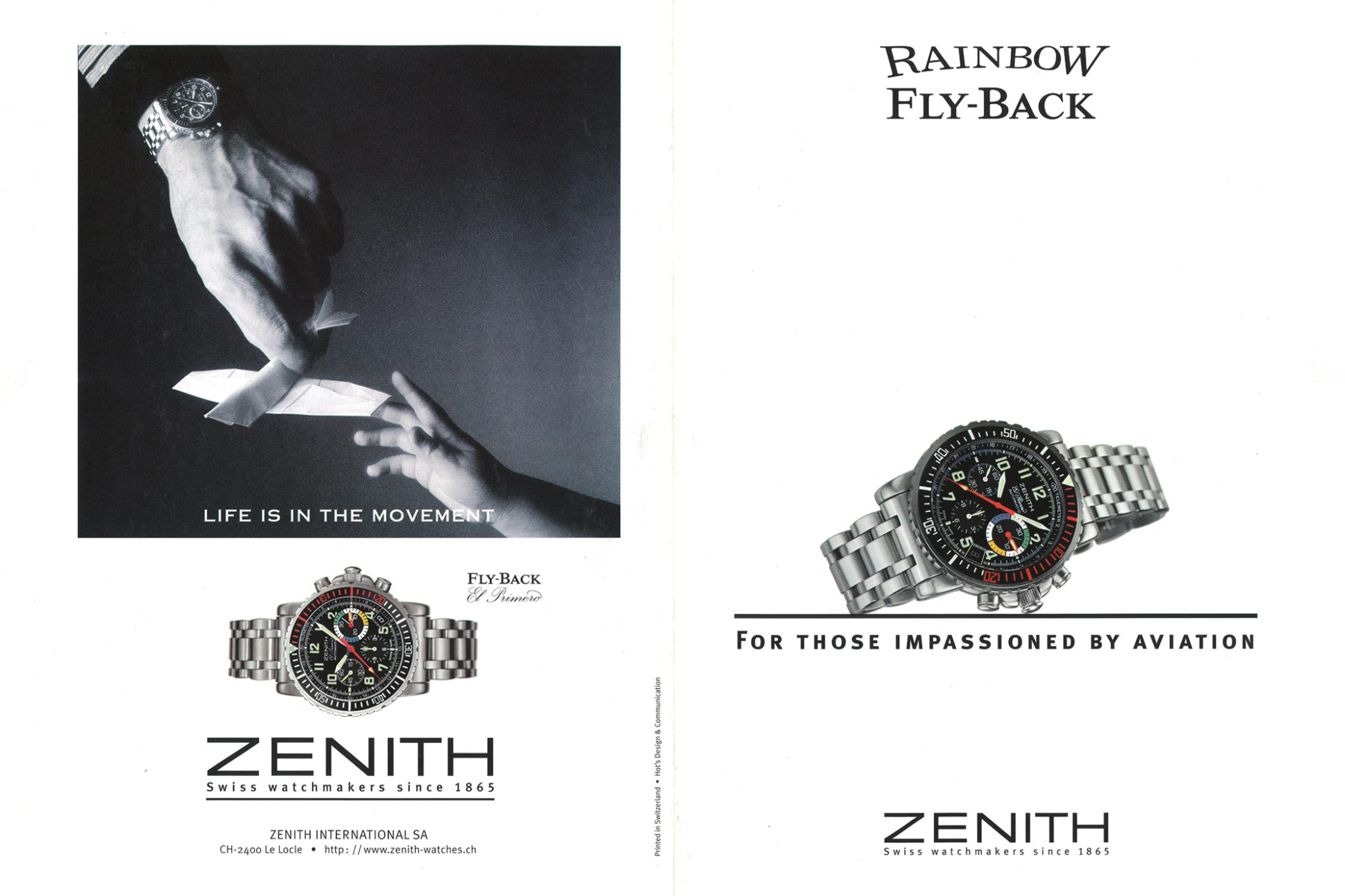
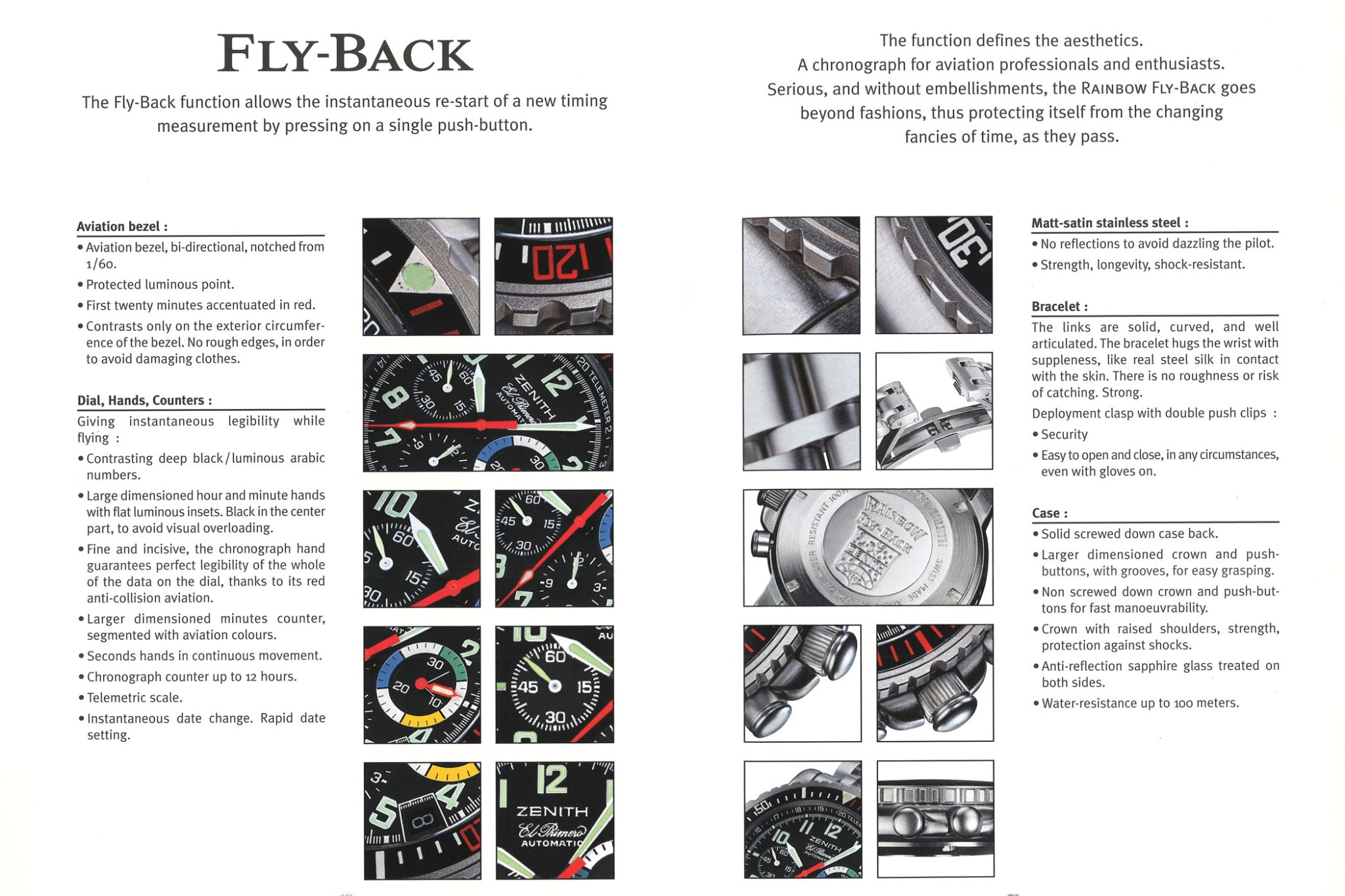
Credit © ZENITH HERITAGE
A movement that is over 50 years old, how can that work?
When production of the El Primero with 36,000 vibrations per hour was picked up again for its own products in the 1980s, there were only a few significant changes. The original calibre had 282 components, and Zenith 3019 PHC was chosen as the calibre name. The number 30 stands for the movement diameter, the third digit for the chronological numbering of different calibres with the same diameter, and the fourth indicates the type of movement, in this case the chronograph (9). These letters are a legacy of the Martel Watch Workshops, which had become the Zenith Ponts-de-Martel Workshops in the meantime. The letters P stand for Perpetual (rotor winding), H for Hour (hour counting) and C for the English word for calendar. The complication variant with day of the week, month and moon phase was called 3019 PHF. Of course, some early models were offered as Movado watches, since Movado was part of Zenith until 1983.
When Zenith started producing mechanical movement components again in 1984 and also remanufactured the El Primero calibre, it was given the designation Calibre 400. In a first step, only the shock protection was changed.
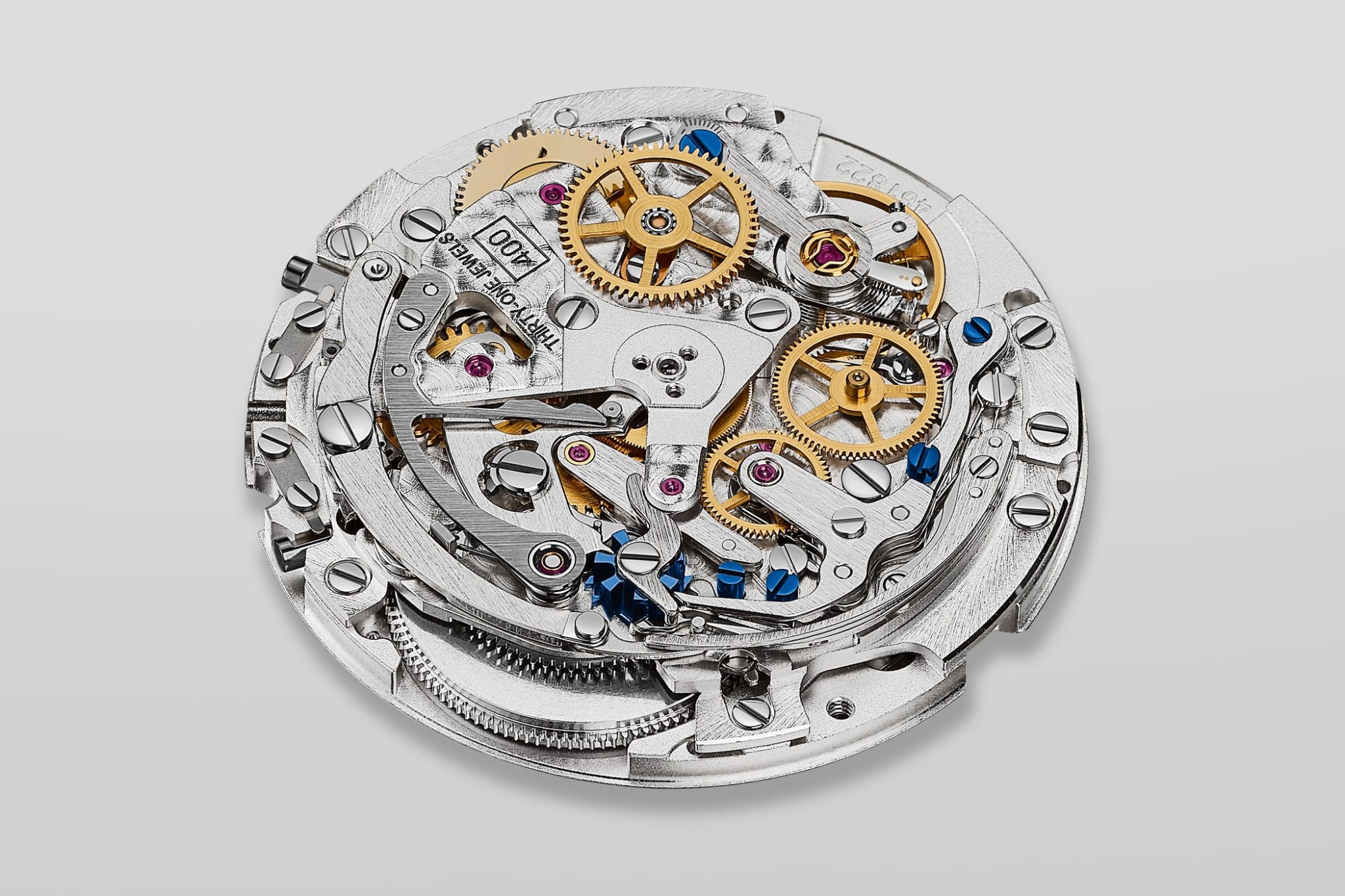
Credit © ZENITH HERITAGE
You can recognise a true classic by constant improvements
Further changes approved by the R&D department in 1998, shortly before the takeover by LVMH, mainly concerned the chronograph bridge, the addition of 20 teeth and a spoke to the fourth wheel, which previously had 100 teeth and 5 arms vs 120 teeth and 6 arms now respectively, the reduction of the number of teeth of the escapement from 21 to 20 and the addition of a blade to the pinion. In addition, the horns of the lever fork were modified and widened a little.
Too complicated? These innovations mainly prevented a rare phenomenon due to an unlikely but possible, unfortunate juxtaposition of teeth that sometimes blocked the running of the watch when it had stopped. This was more a problem in the perception of the wearers, who thought the watch was damaged when it was not. These improved calibres were given the designation 400, 405 and 420 with an appended Z, e.g. 420/Z.
In their original version, i.e. the calibres 3019 PHC and PHF from 1969, the movements are at the same time far removed from today’s movements and yet very close to the original El Primero. How does that work together? For one thing, the manufacturing techniques for movement parts have changed massively since 1969; for example, the first CNC milling machines were not introduced in Switzerland until the mid-1980s, while at the same time the concept of the El Primero remains untouched to this day.
Of course, there have always been improvements in the details, which insn’t surprising for a movement that has been around for 53 years. If you compare the El Primero with a car engine, it would be like driving a new Porsche 911 with a boxer engine from 1969 with 110 hp and a four-speed gearbox instead of a six-cylinder with 385 hp and a double-clutch gearbox.
Credit © ZENITH
EL Primero Flyback – a big shot for a chronograph
In 1995, responding to a call for tenders from the French Ministry of Defence and seeing an opportunity to win a major defence contract, Zenith relatively spontaneously launched an important further development of the El Primero calibre to include a flyback function. After all, this was a mandatory requirement in the contract. Even though the tender came to nothing, the development was maintained and after the presentation at Baselworld in spring 1997, the first El Primero Fly-back watches, fitted with the 405 caliber, were delivered in November.
At the end of the nineties, these El Primero Rainbow Flyback represented the ultimate skills that Zenith had to offer. Manfred Rössner virtually celebrates it in his book and raves about the design, which was worked out in collaboration with aviation experts, and the technical advantages: 100-metre water-resistant, satin-finished steel case, sapphire crystal with anti-reflective coating on both sides make the watch absolutely competitive even today. In total, the two most distinctive Rainbow Flybacks with the calibre 405 and the colour-designed sub-dial in green, yellow and blue were built around 5650 times in accordance with classic aviation codes.
1999: the millennium begins with a bang
All these developments did not go unnoticed by a new player in the field of fine mechanics, the head of LVMH, Bernard Arnault, who subsequently acquired Zenith in 1999. In 2001, the takeover became legally effective and Thiery Nataf, a newcomer to the industry and previously marketing director at the champagne house Veuve Clicquot, now took over. He immediately recognised Zenith’s potential in the luxury segment. But there was one big problem: for this, the number of pieces had to come down from 150,000 – 200,000 to around 20,000 watches per year. What sounds like a lot at first has a simple reason: at the end of the 1990s, about 75 percent of the watches with the El Primero movement had started bearing the name of other companies. Therefore, it was only logical to turn a legendary caliber now also used by renowned watch brands into the hero model of a manufacture whose history is one of the most exciting that the Swiss watch world has to offer.
24 years already under the umbrella of the LVMH Group – the most important milestones
The El Primero movements in detail
Soon the first quarter of a century under the new owners will be over and when Zenith celebrates its 160th birthday in three years, many of the younger watch collectors should first realise what a powerhouse the LVMH Group has made of Zenith again. In 2019, on the 50th anniversary of the El Primero, the aforementioned auctioneer Aurel Bacs, responsible for just about all the world records in recent history, wrote:
“Fifty years after the launch of the El Primero, the chronograph remains at the heart of Zenith’s history. It is by far the model that collectors most associate with the Le Locle brand, and although the movement is now made exclusively for its creator, it still dominates Zenith’s annual production.”
Incidentally, he wrote this as part of a one-off collaboration with Zenith, with whom he auctioned off a “one-off” El Primero chronograph for 250,000 euros for charity: the only El Primero of reference A386 that Zenith has produced to date in 950 platinum and featuring a unique lapis lazuli dial.
Credit © Phillips
Of course, the fiftieth anniversary was not only celebrated by the line and movement; above all, it was recognised that to maintain the classic watch of tomorrow, the most important designs from 1969 had to be revived. In addition to paying homage to the original, several models inspired by its past were released, including faithful reinterpretations of some of its most popular references. A year later, Zenith would also celebrate its emblematic El Primero models from first generation with its Icons programm.
The most important further developments under LVMH leadership
For those in a hurry: the introduction of the ‘Open’ in 2003, the tourbillon version in 2004 –followed by various other complications such as the power reserve, to name just one, and which helped the El Primero achieve its first so-called grand complication – represent the most important evolutionary steps of the same line of calibers. I will discuss the development of the 50 Hz version in 2017 and the development of the 3600 in 2020 later. But one step at a time.
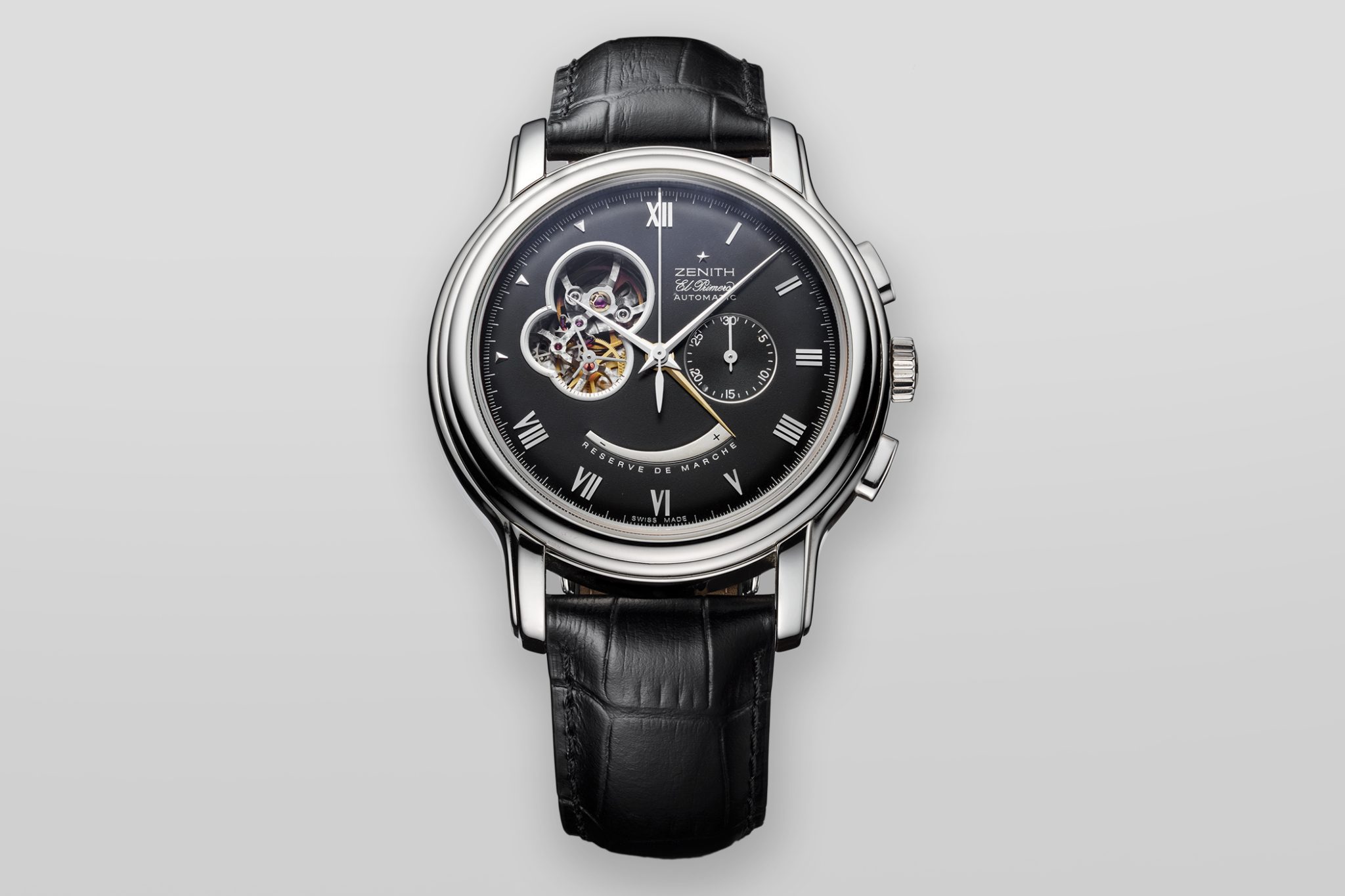
Credit © ZENITH HERITAGE
2003 insights into the movement – outlook on the future
While the Rainbow version was being phased out by 2003, CEO Nataf used a trick to create a new, exciting version of a watch that had actually kept its beautiful interior to itself for far too long. With the El Primero Open, there was now a model where the mechanism would always be visible, both on the front and on the back. Every watch fan knows: as nice as it is to have transparent casebacks, it is all the more annoying that you have to take the watch off to do so. Perhaps the Primero Open calibre is Thierry Nataf’s greatest legacy, next to the introduction of complicated variants of the El Primero movement. He asked the engineers not only to open the dial, but also to make it possible to look completely through the watch by means of an open-worked plate: Now the viewer can admire the balance spring with its particularly fast 36,600 vibrations as well as the escapement system. However, this trick meant that the movement plate and the new bridges had to be recalculated to prevent deformations from everyday wear. The measure was worth every penny because with it, Zenith kicked off a development that continues as a trend in the watch market to this day: dials that allow for a visual view into movements without impairing the readability of the time are now part of the portfolio of almost all sophisticated Swiss manufactures.
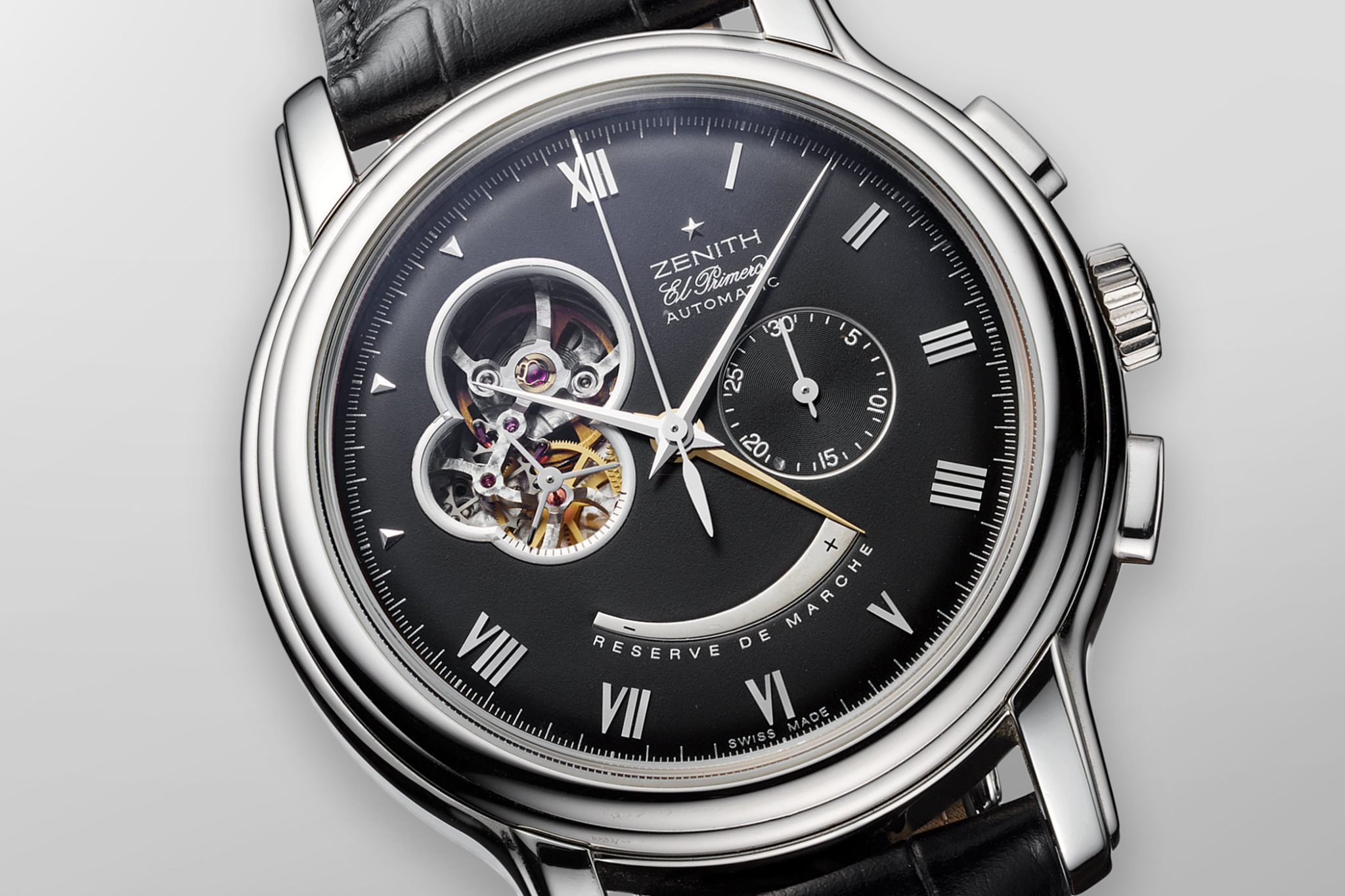
Credit © ZENITH HERITAGE
2004: Things get complicated
Considering that a good two decades earlier, Zenith was negotiating with Rolex to have any chance at all in the watch market again, the following lines almost read like those of a miracle.
Zenith’s grand complications
Under the guidance of Thierry Nataf, the El Primero range was to be expanded to include elaborate horological complications. As early as 2004, a tourbillon mechanism was added to the movement to compensate for gravity. The Grande ChronoMaster XXT Tourbillon was not only the result of three and a half years of research and development, but the first high-frequency tourbillon on the market. But that was not all: it was followed by a perpetual calendar, the Grande ChronoMaster XXT Perpetual Calendar. When the minute repeater Class Traveller was introduced in 2005, the manufacture had reached the absolute zenith of watchmaking. For this masterpiece, 30 patent requests were filed. In addition to the chronograph mechanism, the calibre with unidirectional rotor winding enabled the striking of a minute repeater in addition to an alarm, the big date, and a second time zone. The calibre 4031 looked like a supersonic jet compared to the Wright brothers’ paper aeroplane. Two years later, in 2007, the watchmakers finally combined the tourbillon with the perpetual calendar in a watch from the Academy line. As significant as these watches are in Zenith’s history (and as rare for collectors), however, they had one drawback: the brand got bogged down instead of focusing on its core themes. That being said, worth mentioning is the introduction of the first in-house tourbillon, the Zero G, which debuted in 2007. It is particularly noteworthy because the movement was groundbreaking for Zenith, and the company has continued to use and improve it ever since.
2010 – The El Primero Striking 10th
The opposite was the case with this ground-breaking watch: many fans of the brand knew about the unique tenth-of-a-second measurement of the El Primero calibre, but until now you could not read these fractions of a second on your watch. Zenith now made it possible for its customers to see what they had measured. The El Primero Striking 10th, introduced in 2010, can display tenths of a second: the stop-seconds hand completes a full rotation around the dial in ten seconds.
How does the mechanism work?
Among the complications that subsequently helped make the El Primero a legendary calibre, the jumping seconds known at Zenith as the Striking 10 is one of the most impressive and remains a rarity in luxury watches to this day.
The invention is a mechanism that connects a first gear train driven by the mainspring barrel to a minute wheel and a seconds wheel, which includes an escapement driven by the gear train and a regulating organ whose oscillations are maintained by the escapement. The latter has an escapement wheel that completes a rotation of one second per jump: To create the jumping seconds function, a second gear train must be added, the first wheel and pinion of which are mounted on the escapement wheel shaft and the last on the shaft that carries the jumping seconds function and serves to transmit the same rotation of the jumping seconds hand as the escapement wheel.
2012: the ultimate quality test from 38,969.4 metres above sea level
For those who have persevered until now and still think that this Zenith watch or its movement might not meet their modern wristwatch quality requirements after all, the following story that helped the El Primero achieve another ‘World’s First’ (or several, depending on how closely you look at it) will certainly help. When Austrian extreme athlete and stuntman Felix Baumgartner plunged out of a balloon in a pressurised suit as part of the Red Bull Stratos project on 14 October, almost exactly 10 years ago, to land on earth a good 38.9 kilometres later (over 36 kilometres of it in freefall), he was not only the first person to break the sound barrier without an aeroplane, but also the first person to wear a mechanical wristwatch while doing so. You already know the one: a Zenith El Primero. But the best thing about it was that the watch was indistinguishable from a standard watch, except for the name and a special embossing on the back. The “Zenith El Primero Stratos Flyback Striking 10th Tribute to Baumgartner” model is probably still one of the most media-viewed watch models in the world. Baumgartner’s jump was viewed 52 million times on YouTube during the event, peaking at 8 million simultaneous viewers, also a record and a huge promotion for the brand. Of course, Baumgartner didn’t reach quite as many as the more than 600 million people who saw Buzz Aldrin’s first steps on the moon with his Omega Speedmaster in 1969 (Neil Armstrong had taken off his Speedmaster when he took his first step on the moon in order to have a watch in reserve), but for a sponsored event this is still what can be called an astronomical number.
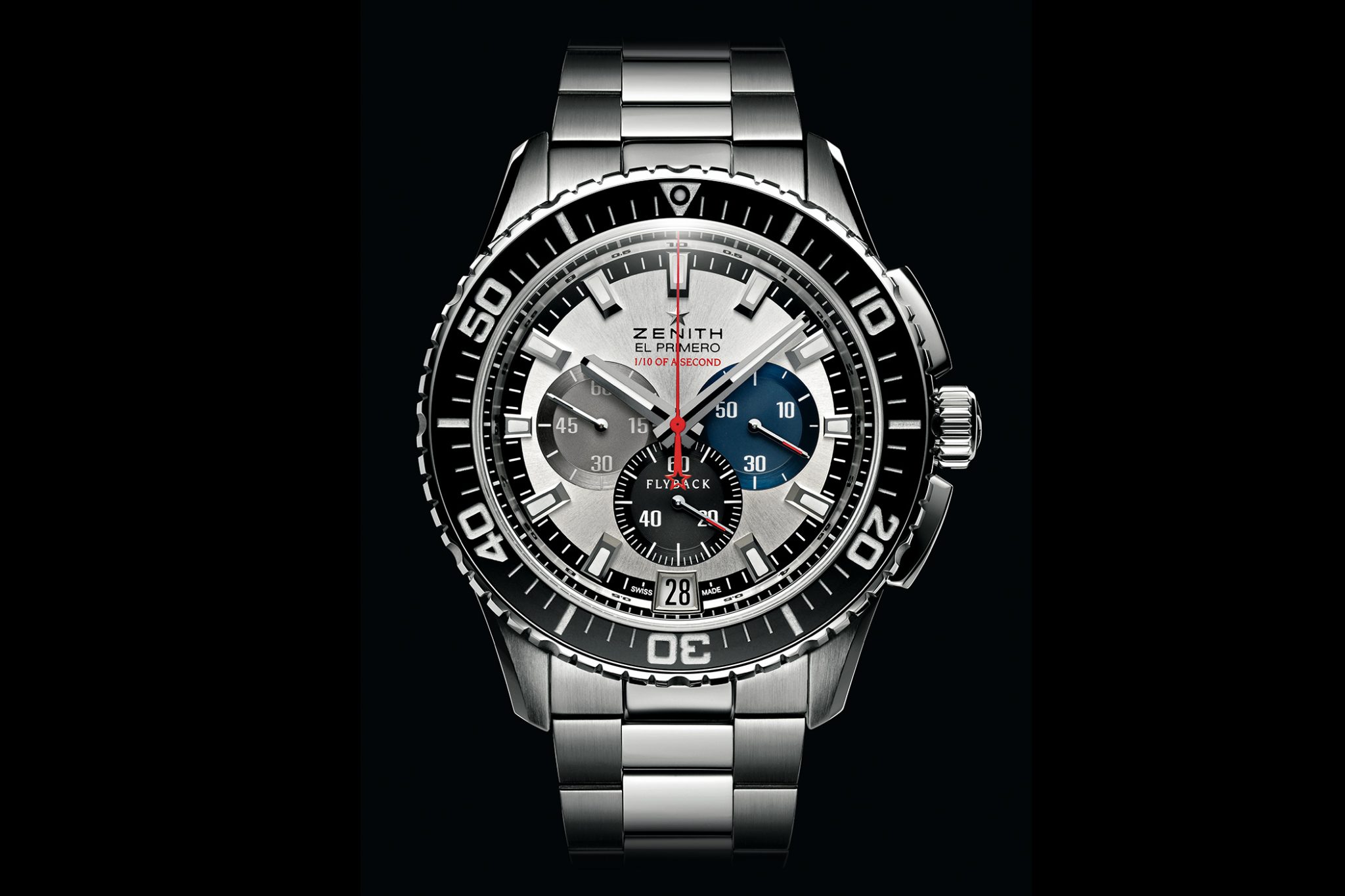

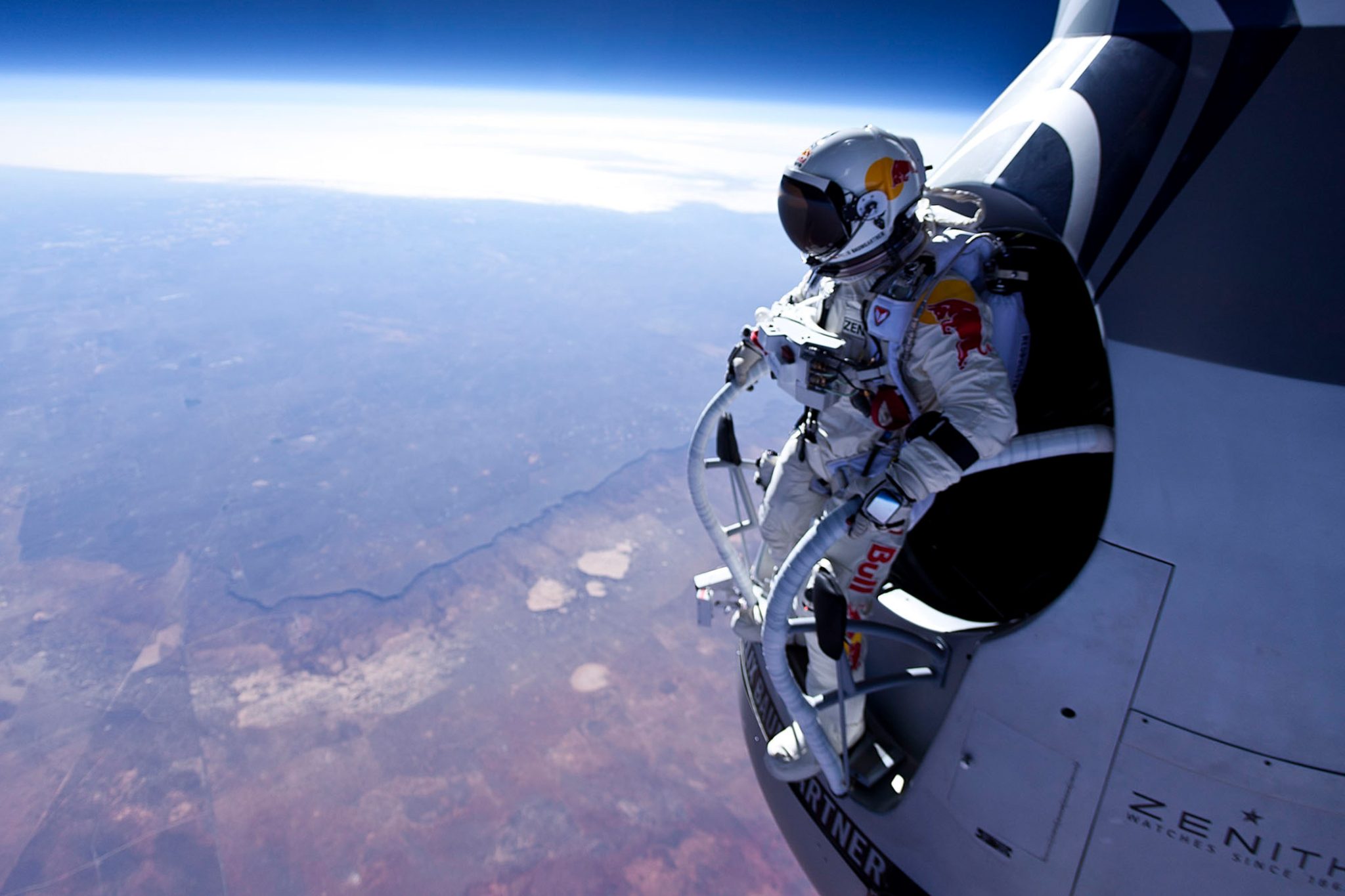
Credit © ZENITH HERITAGE
It goes without saying that the whole thing could have gone pear-shaped if you were the first person to jump from a pressurised capsule in the stratosphere to break a record that had previously stood for 62 years. The speed of 1357.6 kilometres per hour alone is the greatest speed achieved in free fall to date without a stabilising parachute. Many fighter jets fly slower.
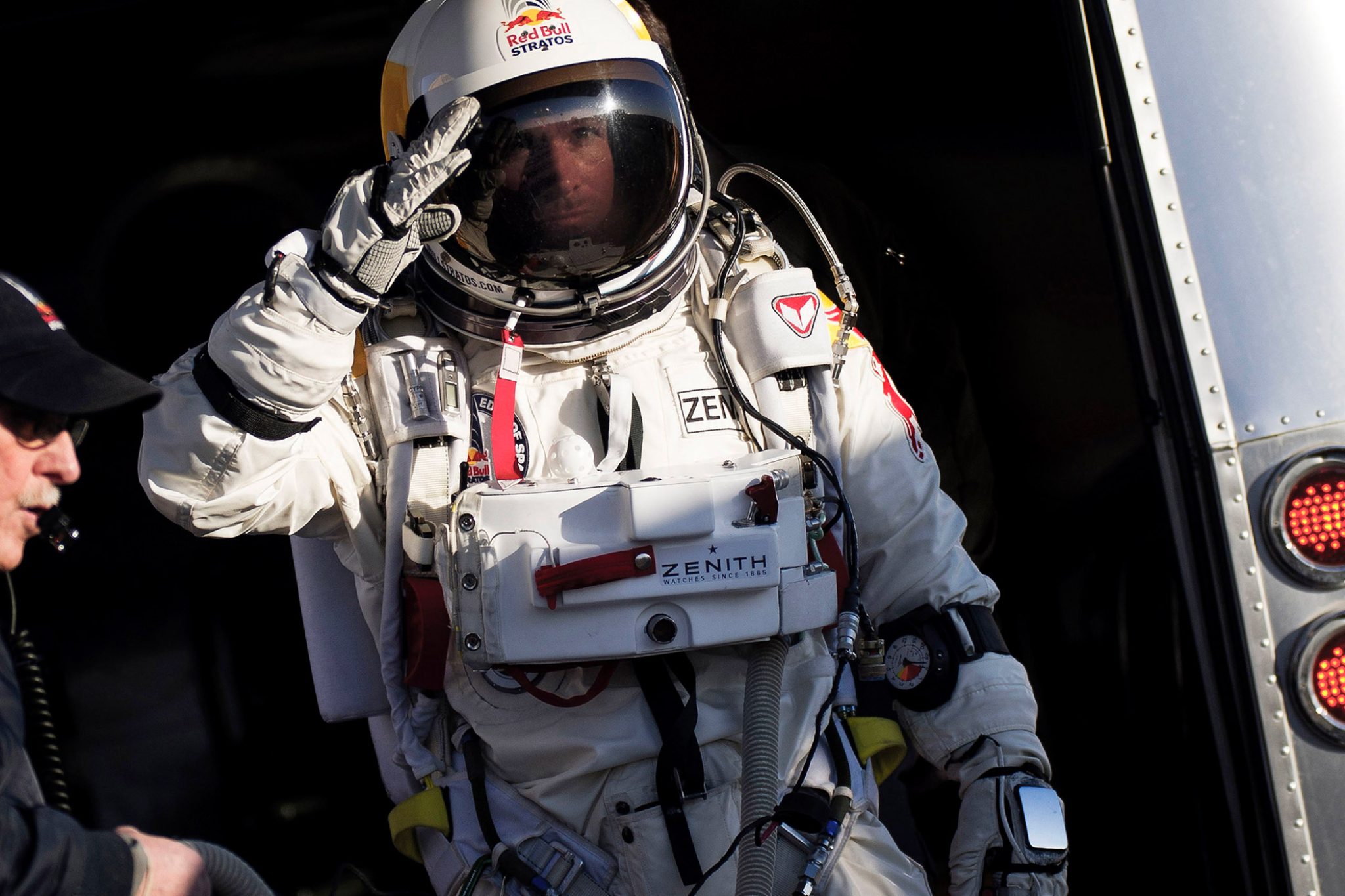
Credit © ZENITH HERITAGE
More proof of quality is not really possible
With a diameter of 45.5 mm and a thickness of 14.15 mm, the stainless-steel model was somewhat more powerful than classic El Primeros, but today such sizes are easily outdone by much less exciting models. Incidentally, the solid steel caseback is engraved with the Stratos mission logo, framed by the words “FIRST WATCH TO BREAK THE SOUND BARRIER”. Quite modest for the world records set. Baumgartner’s motto “LEARN TO LOVE WHAT YOU HAVE BEEN TAUGHT TO FEAR” also takes on an interesting turn when you know that Mr Baumgartner discovered his claustrophobia while preparing for the jump and had to learn to deal with it.
Incidentally, anyone who thinks the case version of the Stratos is not rooted in Zenith’s history should take a look at the 1972 references A3821 and A3822. Designed as both divers’ and pilots’ watches, these models featured a solid rotating 12-hour bezel and screw-down crowns with double seals. In total, both references were built only 2,005 times, plus 50 pieces each with open caseback – and that in 1975!
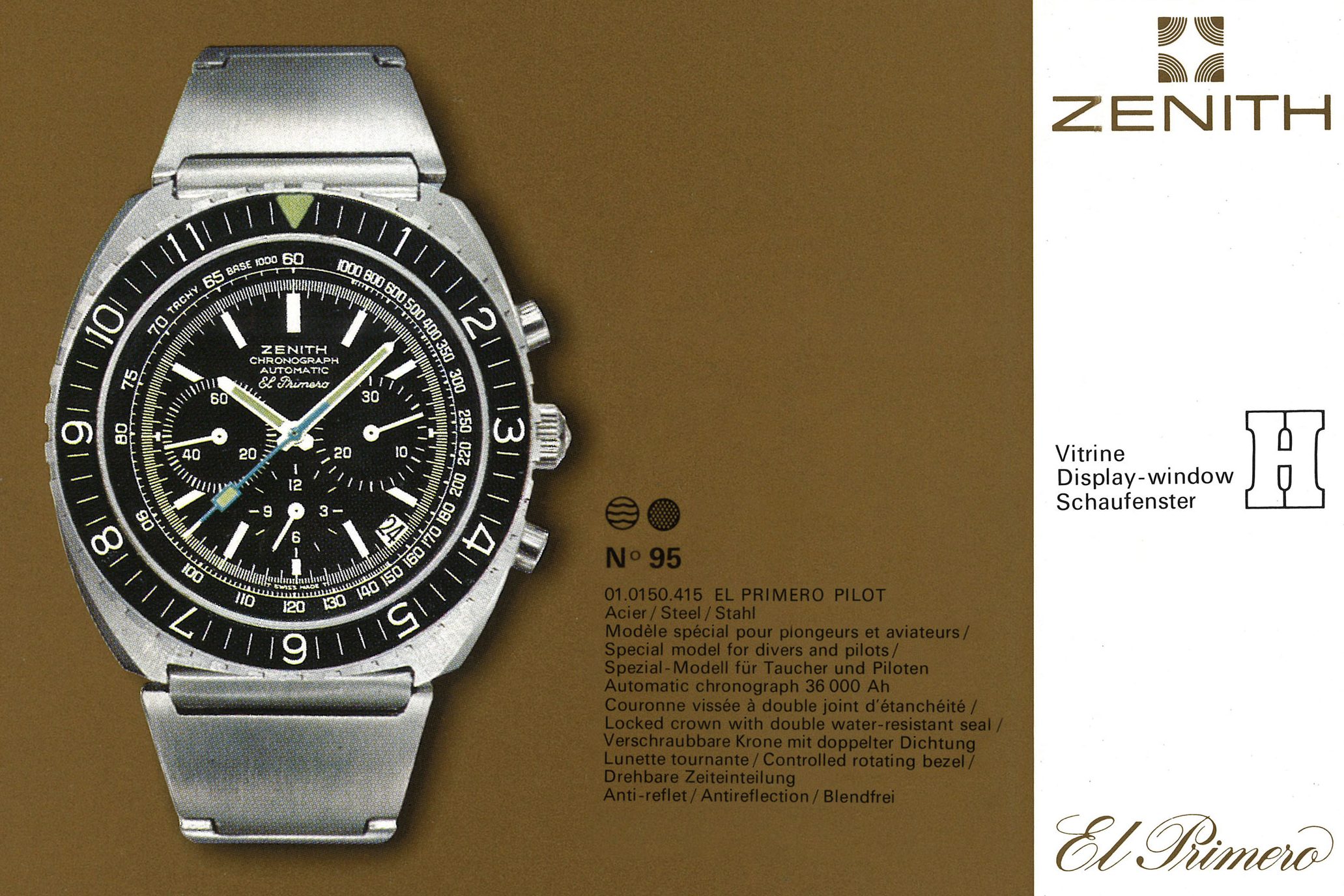
Credit © ZENITH HERITAGE
2014 The lightweight among the El Primeros
The perfect counterweight to the mighty Stratos, of which there were also slightly more civilian variants without flyback function in the following two years, is the El Primero Lightweight of 2014. Built only 100 times, it is an outstanding example of the creativity and efficiency of the engineers at Zenith in constantly reinventing the El Primero movement. While the heaviest parts of the movement are usually made of brass, in this movement brass has been replaced by titanium, both for the main plate and the five bridges. That is, the barrel bridge, the balance, the anchor, the escape wheel and the chronograph. The anchor and escapement wheel are even made of silicon, as is the double chronograph wheel. The calibre 4052 W consists of 334 components and weighs only 15.45 grams, in contrast to the 21.10 grams of the classic version of the same movement. These new components make the movement amagnetic. The first carbon fibre case of an El Primero with inner case components made of ceramicised aluminium make the model extremely desirable and pave the way to the future of high-tech mechanical watchmaking in the 21st century.
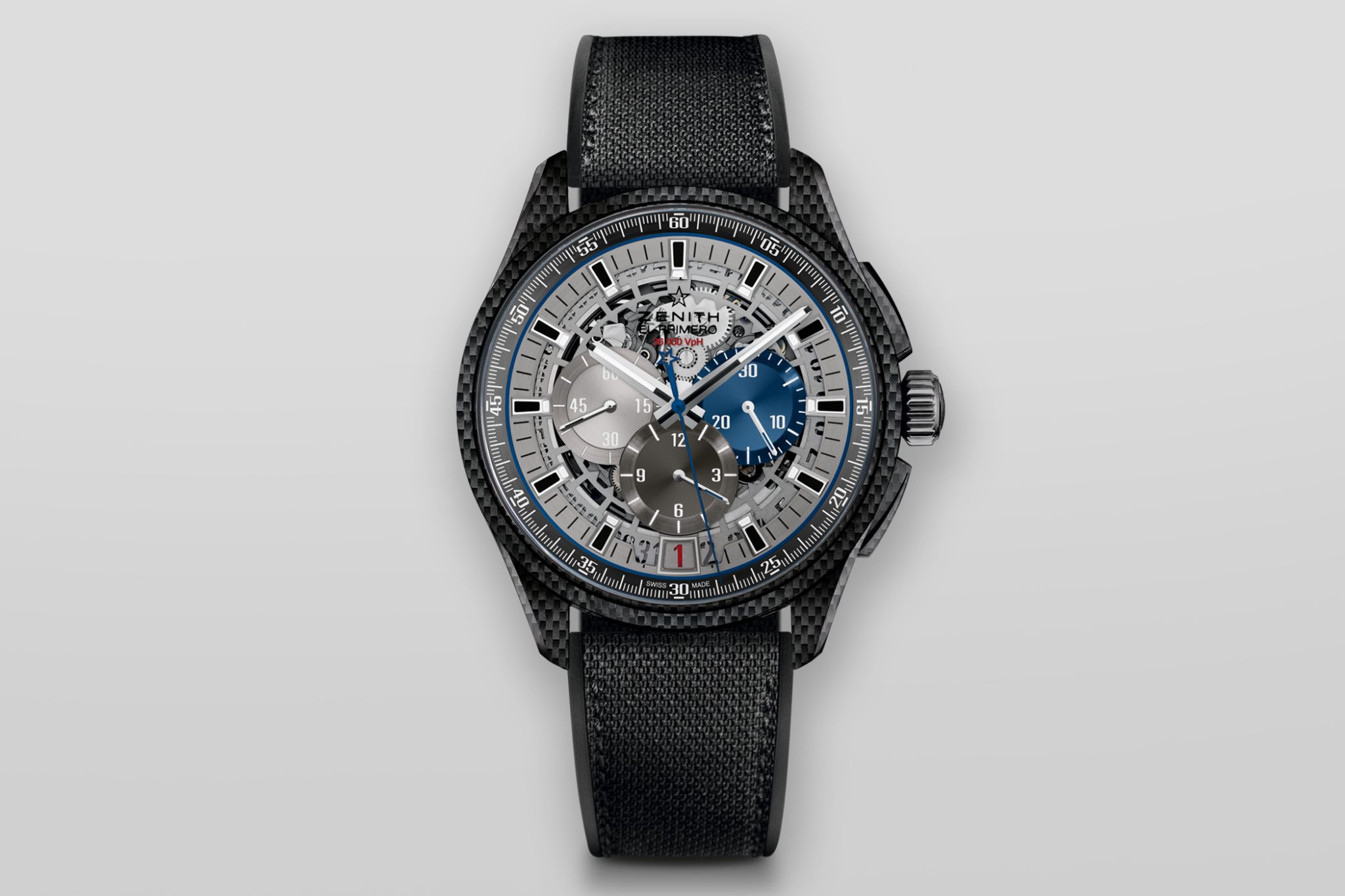
Credit © ZENITH HERITAGE
Speaking of weight: CEOs of recent years
A strong watch brand can withstand any CEO. This is especially true for Zenith: while Thierry Nataf was due the glory of exploring Zenith’s luxury potential in the 21st century, he was followed by quite different heavyweights. Before Jean Claude Biver took the stage in January 2017 after the rather luckless Aldo Magada, an important CEO should not go unmentioned. For me, it is actually the most charming side-story in this text, considering the close interlocking with Rolex at Zenith and its importance for the continuity of the company. In 2009, Jean-Frederic Dufour took over Zenith, not knowing himself at the time that he would go down in watchmaking history. He not only significantly renewed Zenith’s production and radically reduced its references, but also decisively sharpened the view of the brand’s history, which threatened to get bogged down a good 10 years ago. It is a nice joke in history that this manager, of all people, was called to Rolex in 2014 to lead the Geneva manufacture to this day. At least twice, the paths of these two brands have fatefully crossed; we can look forward to the third time.
The most enigmatic watch personality of the last 30 years takes over Zenith
Jean-Claude Biver, undisputedly the most dazzling personality in the Swiss watch industry of the last 30 years, who has helped shape the resurgence of the mechanical watch like no other (if anything, it was Swatch founder Nicolas G. Hayek), temporarily headed Zenith as head of LVMH’s watch division until 2017, when a new leader was found for Zenith. He is also said to have ensured that an old competition between manufactures was settled. As he was also CEO of Tag Heuer at the time and knew of its ambitions in high-frequency timekeeping, he decided that Zenith should have exclusive access to two technologies that would finally catapult the El Primero movement into the 21st century. He also laid the groundwork for Julien Tornare, who had previously worked at Richemont for Vacheron Constantin, and helped him reposition Zenith.
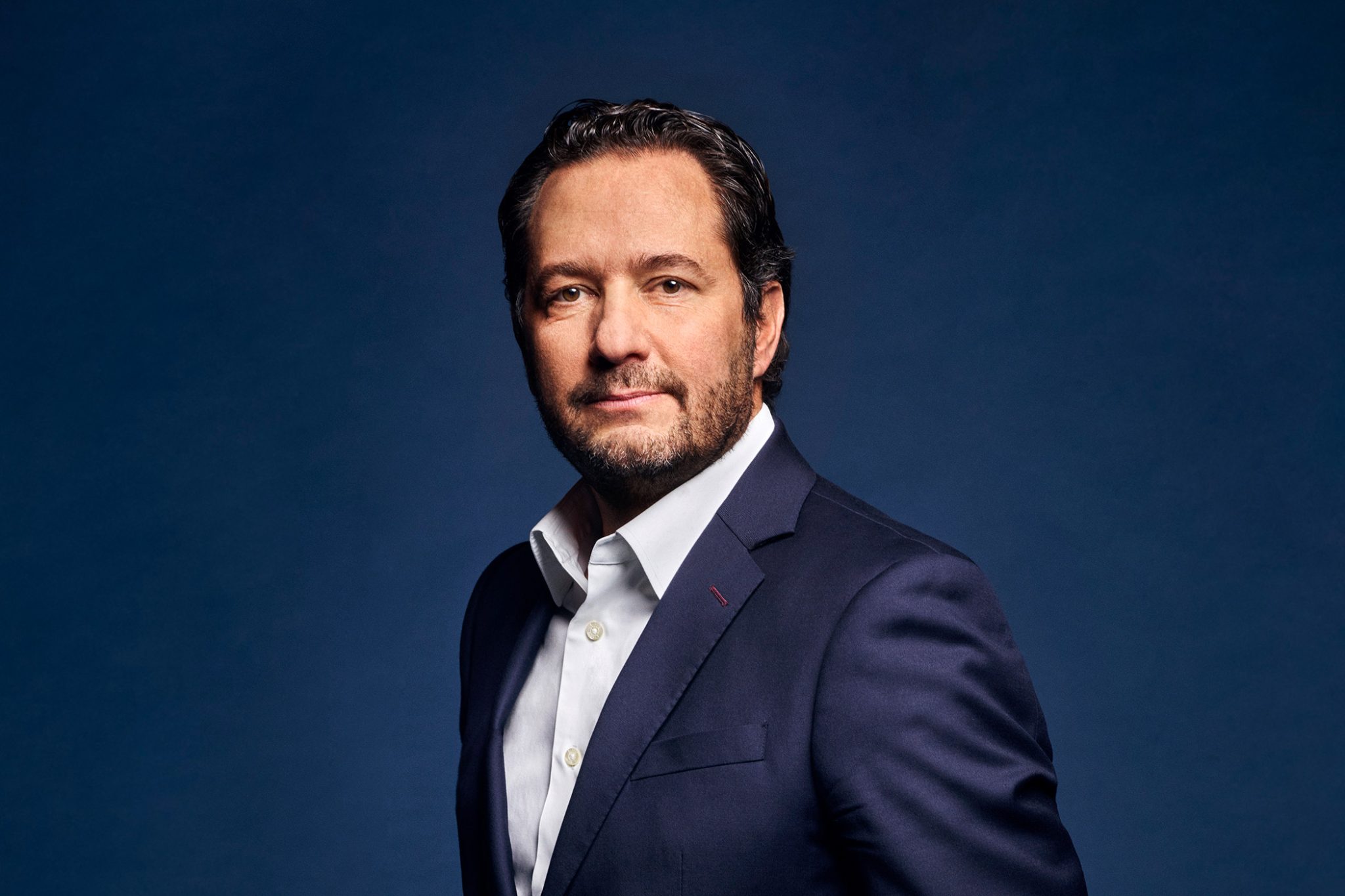
Credit © ZENITH
2017 – The hundredth of a second with the Defy El Primero 21
I’ll spare you the technological background that made this El Primero calibre possible, as it’s very well read everywhere, but Zenith of course knew that at some point, they would be faced with the question: is a tenth of a second enough for an age in which 1/1000th of a second often already seems too slow? Being able to measure the hundredth of a second mechanically with the Defy 21 was only made possible by a new Balance , which oscillates at a frequency of 50 Hz, i.e. at 360,000 vibrations per hour – ten times faster than its legendary predecessor.
2017: two revolutions in one year
Even though this watch is not an El Primero, I would like to mention it briefly here, simply to show the level at which Zenith is now playing. In the same year, Zenith presented the Defy Lab, equipped with a new oscillator in a single piece of monocrystalline silicon. This not only replaces the hairspring, which has been used for mechanical watches since its invention in 1675 by the Dutch scientist Christiaan Huygens and still powers almost all mechanical watches today, but this oscillator replaces the entire assortment of mechanical watches. Around 30 components are replaced by one component! The Defy Lab, with its frequency of 18 Hz, is also the result of the research and development work of the LVMH group, in particular of Guy Sémon, who at the time was General Manager of TAG Heuer, but in the course of this became head of all Research and Development activities of the three LVMH watch brands HUBLOT, TAG Heuer and Zenith. As my fellow writer Gisbert Brunner writes, Sémon, who holds a doctorate in physics, spent five years working with a team of technicians and scientists to develop the monolithic Zenith oscillator, just 0.5 millimetres high. The most important step in the recent history of the El Primero, however, came just two years later.
2019: CHRONOMASTER 2: Optimisation in the Spirit of the Original
Back to the famous movement, whose latest evolutionary stage was presented on its 50th anniversary: Calibre 3600. In the version of the Chronomaster 2, initially available in limited quantities of 250 pieces each, Zenith installed for the first time since 2019 an evolved El Primero calibre (without, of course, adjusting the old movement), which experts see as a combination of certain characteristics of the Calibres 400 and 4052B. According to the manufacture, it was all about modularity, optimised industrial production, assembly and adjustment. Fans of good mechanics will appreciate the addition of a stop-seconds function and an increased power autonomy of 60 hours (up from 50). For the future, there is now the possibility of integrating further functions and displays. The optimised calibre, now named El Primero 3600, has all the main features of its famous predecessors: a chronograph function accurate to the tenth of a second and easy to read on the second hand, as in the Striking 10, a flyback mechanism and an integrated construction with lateral clutch, switching wheel and ball-bearing central rotor. To improve such a movement incidentally for easier assembly speaks for the foresight of the engineers. For there must still be watchmakers in the future who are capable of servicing such movements. Plus, of course, this movement retains the aesthetic and technical features of the original. It is still an integrated high-frequency movement, the date display remains, as does the vertical coupling and column wheel. It consists of slightly fewer components than the original model, which is also more than noteworthy given the other performance data.
The ten rarest El Primero collector’s watches
Finally, we come to the question of which watch is the rarest? Rarity, of course, is not always relevant to the importance of a model, so this question doesn’t really seem appropriate here. Besides, as mentioned above, there are many El Primero models of which only a single reference exists up to references of 200 examples. These include, for example, the 1969 G581 (with only 150 examples) as well as later “Space Age” models with less than 100 examples or other great El Primero models with less than 5 examples. Some early references also had transparent casebacks and were limited to 50 pieces. There are even absolutely unique examples with lesser-known references, such as the W482 in white gold with diamonds on the bezel.
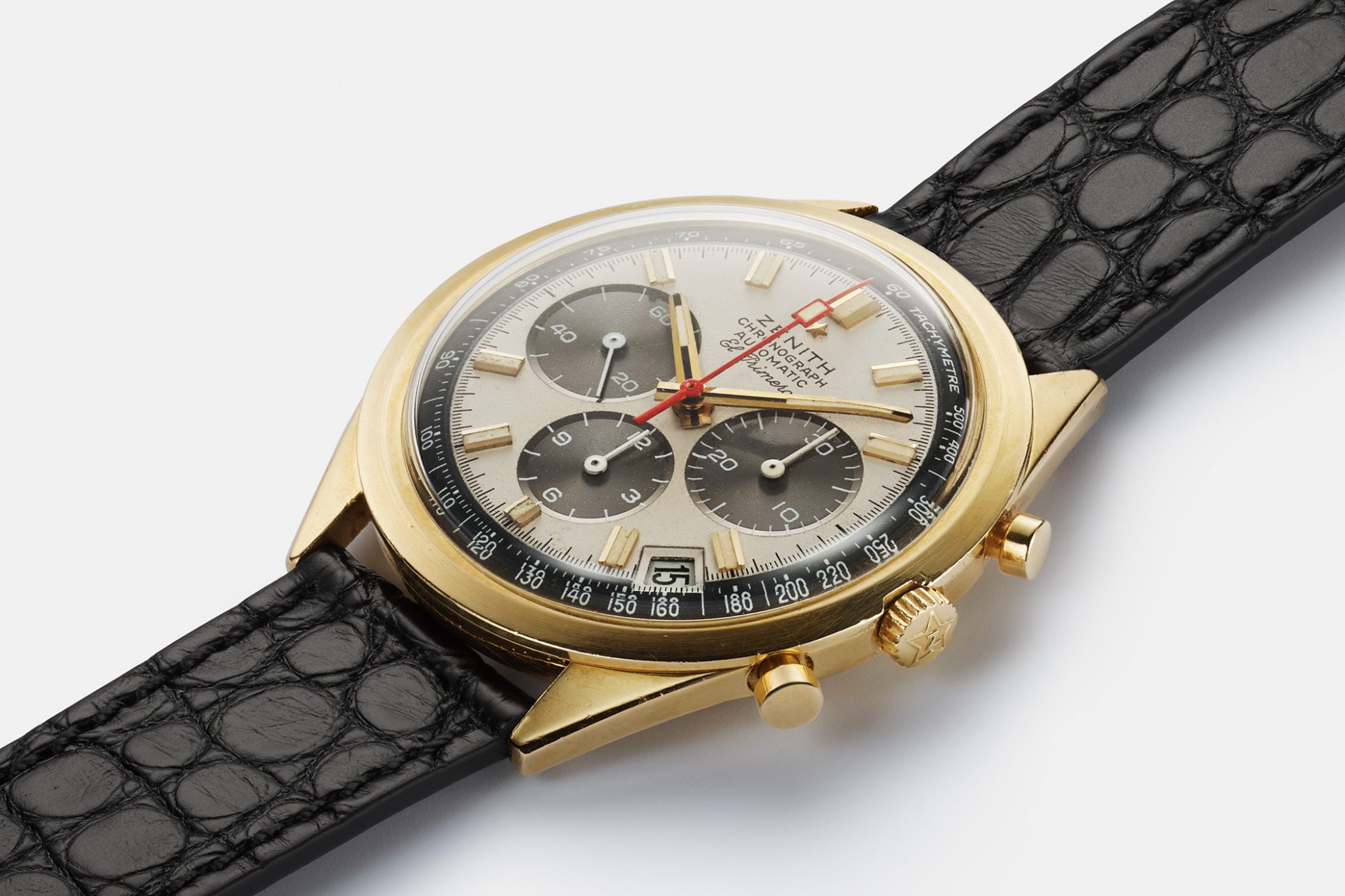
Credit © ZENITH HERITAGE
As mentioned above, collectors will be interested in the very first generation of the El Primero between 1969 and 1972, which already includes more than ten of the most collected El Primero models, to be precise the models with the references A386, A384, A385, G381, G382, G383, G581, G582, A3818, A3817, A781, A782, A783 and G786. The list of references is not intended as a ranking. Anyone who studies this text carefully will know that historically, all these models were followed by equally collectible models and bestsellers, and quite a few of the early models can be purchased from Zenith today as Icons (for the original models), or revivals (for their contemporary reinterpretation). Are the latter just as stable in value? Only time will tell. In any case, they fuel the fame of the originals and preserve the now truly rare watches for posterity. Also, they relax collectors who prefer to keep the original in the safe – even if the watches are still suitable for everyday use today.
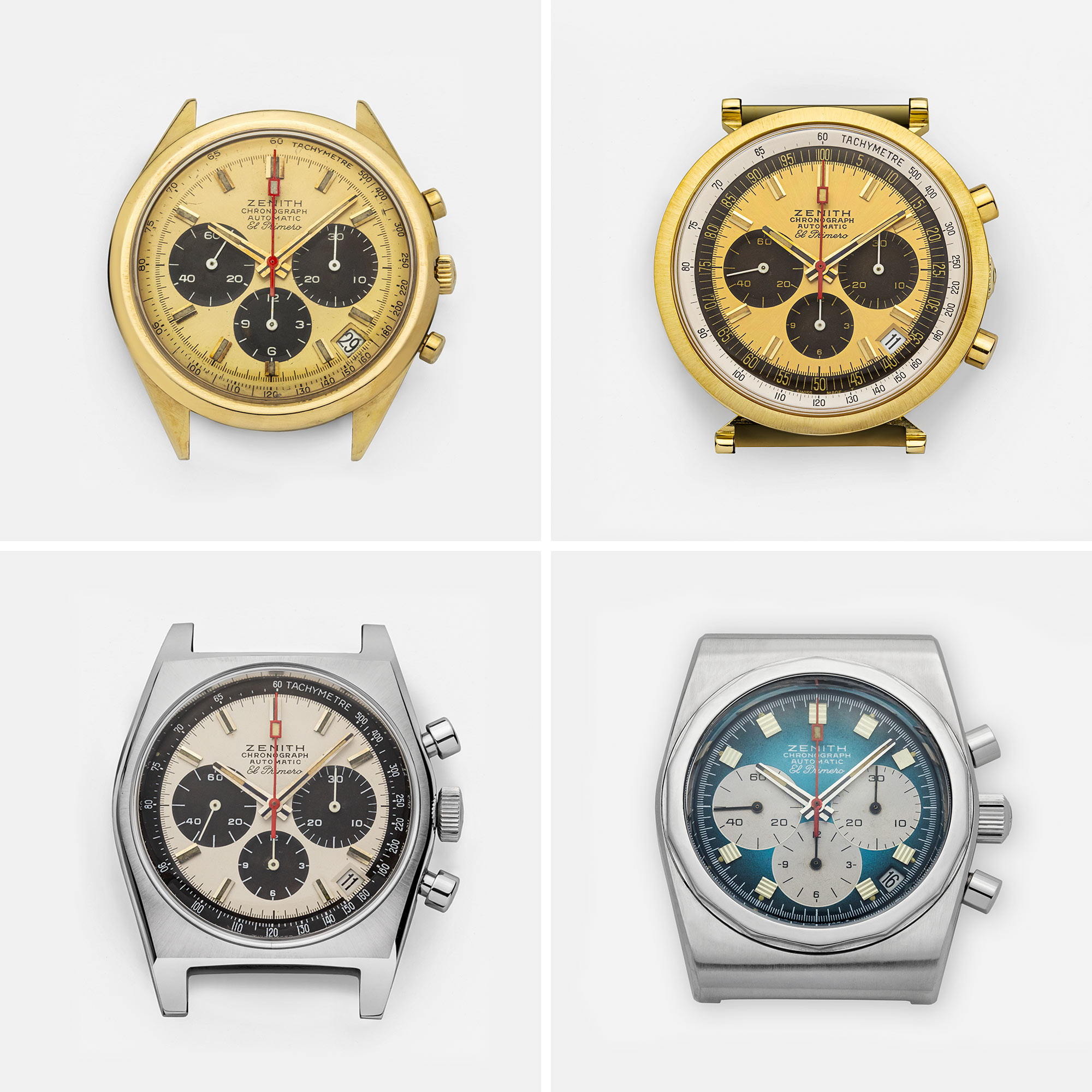
Credit © ZENITH HERITAGE
A world record for the future – and for a good cause.
If you look at the price development of important Swiss wristwatches in recent years, there was only one direction: upwards. This also has to do with bitcoin billions and an increasingly transparent market for vintage watches. Until now, professionals can only really trust auction results. Here, Zenith was able to set another important record last year.
The most expensive Zenith ever sold at auction was an El Primero Defy Double Tourbillon Felipe Pantone model with the reference 04.9001.9020/49.R782, which changed hands for 480,000 Swiss francs at the Only Watch auction last year.
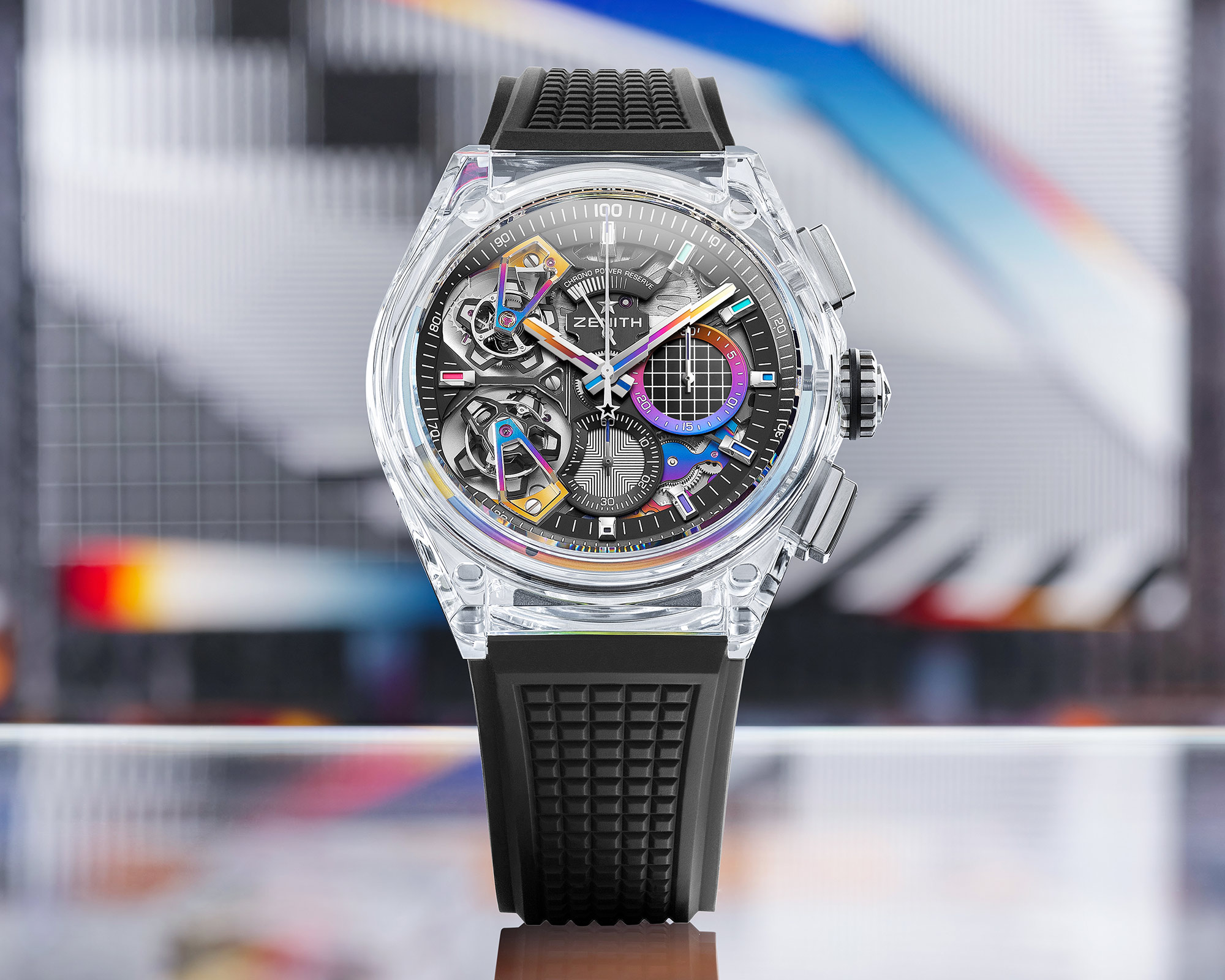
Credit © ZENITH
This is astonishing in that the watch more than doubled its maximum estimate of 220,000 euros. The Defy Double Tourbillon Felipe Pantone, a unique piece developed in collaboration with the street art artist of the same name, is based on the El Primero calibre 9020, which was installed in a 46 mm case.

Credit © ZENITH
Whether by chance or not, the rainbow-coloured, PVD-coated bridges with the black laser-engraved main plate and the special oscillating weight are at least remotely reminiscent of the Rainbow model that celebrated great success 20 years earlier. No wonder, then, that there is a parallel series model of this truly remarkable watch, the Zenith DEFY 21 Felipe Pantone Chromatic, limited to 100 pieces.
El Primero – being among the first is an eternal commitment
Although no one can foresee the future, there is no need to worry at Zenith, at least not as long as the parent company LVMH dominates the world of fashion with brands like Louis Vuitton. On the contrary, embedded in a network of engineers, scientists and watchmakers, Zenith is poised for further advancement. The most beautiful (and, for buyers of new watches, most painful) proof of the great desirability of Zenith watches is the fact that at the moment, you even have to wait for some models like the Chronomaster Sport. Will Zenith be the first manufacture to crack the 1/1000th of a second?
Is Zenith the first manufacture to break the 1/1000th of a second barrier?
Waiting is a good keyword when it comes to Zenith’s future. Of course, the current CEO Julien Tornare is keeping a low profile when it comes to the next big anniversary in two years, the 160th anniversary of the company’s foundation.
When asked, for the sake of this text, whether it is realistic to predict that Zenith will add another extreme milestone to its history in the foreseeable future and work on mechanically cracking the 1/1000th of a second, he answers confidently but at the same time vaguely: “We are certainly working on the mechanical measurement of the 1/1000th of a second, but you have to bear in mind that it represents a completely new approach to watchmaking that has to be developed. It cannot be based on the escapements we work with and know today. It is a completely new approach that requires a lot of time and effort.” He will certainly be helped in this work by the so-called LVMH Institute of the parent company, where they had already developed the technology to measure 1/100th of a second, initially for Tag Heuer in 4Hz technology, but for which it was then decided under Jean-Claude Biver to adapt the system to the El Primero movement.
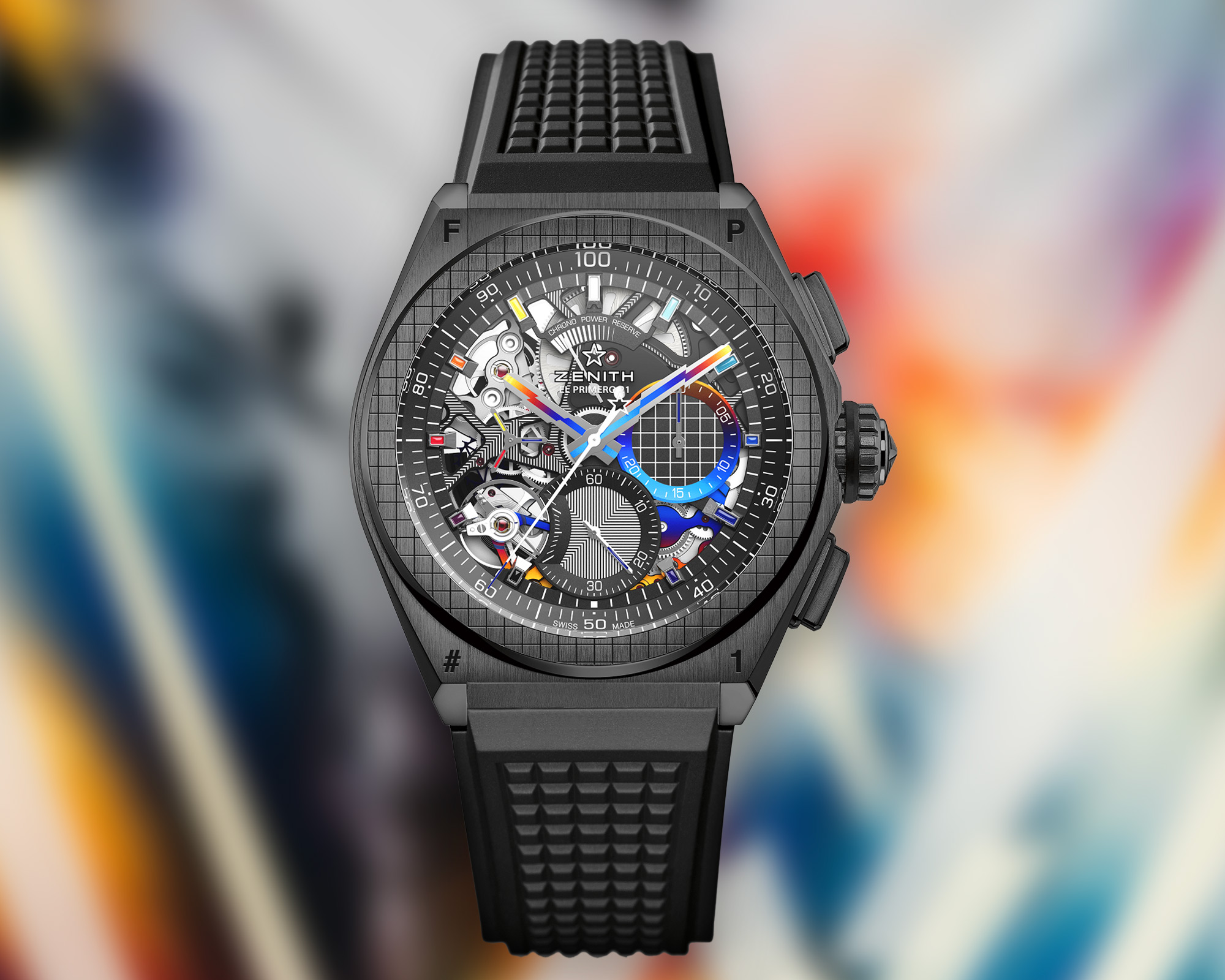

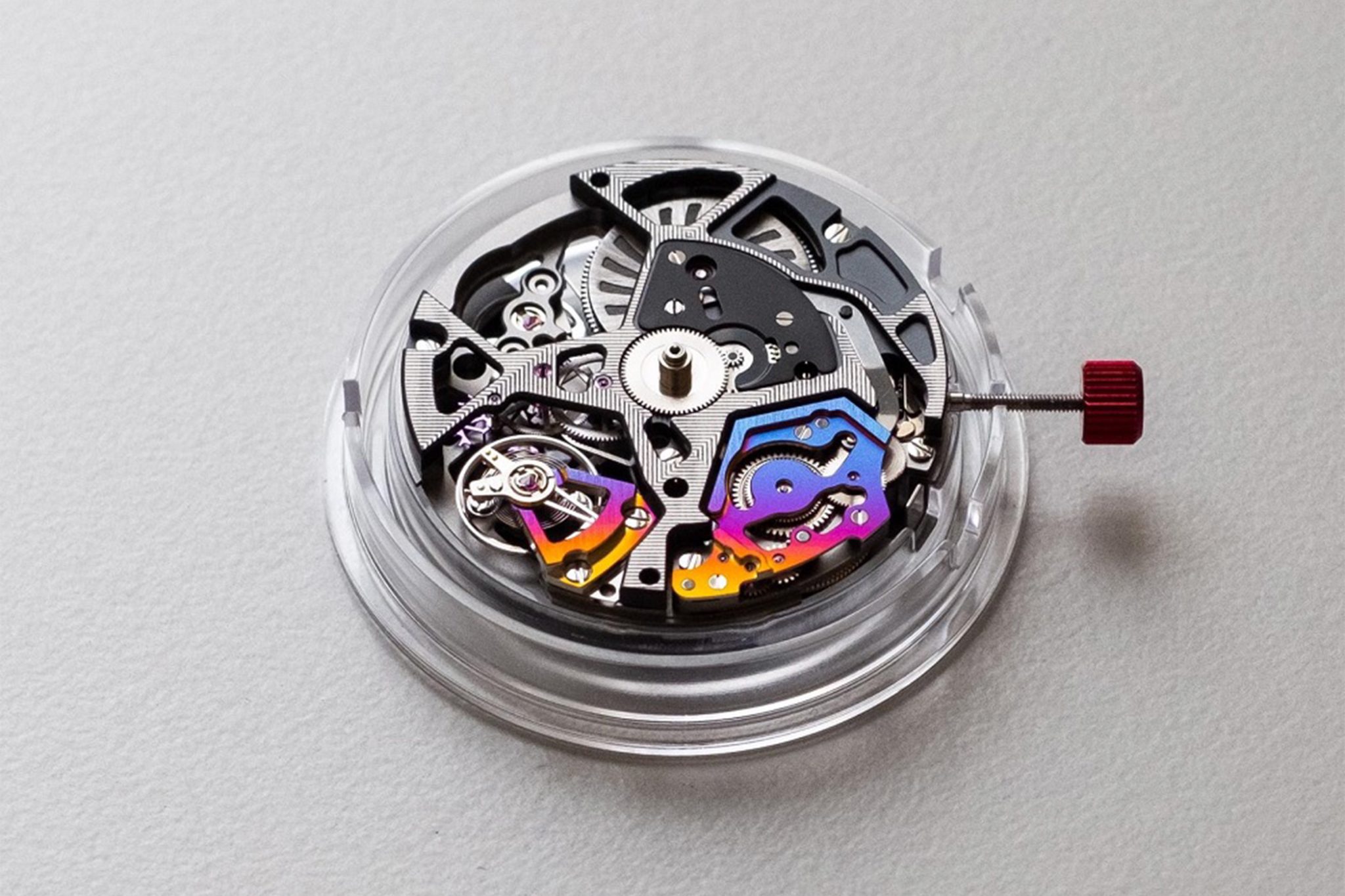
Credit © ZENITH
To become something eternal, sometimes have to take detours en route
Charles Vermot instinctively felt this when he helped save the brand from sinking in the mid-seventies. By the way, there were also some great collector’s models bearing his name in the end. The brand dedicated the first Charles Vermot edition to him back in 2012: a COSC certified chronograph with date in a 42 mm steel case. This piece was limited to 1975 pieces, alluding to the year internally agreed as the start of his secret attic campaign.
This was followed in 2014 by the Zenith El Primero Chronomaster Power Reserve “A tribute to Charles Vermot” Limited Edition, ref. 03.2085.4021/51.C700, limited to 1975 pieces with a blue dial and a full calendar chronograph limited to 500 pieces with a silver dial. In 2015, the Zenith El Primero 410 Tribute to Charles Vermot, reference 03.2097.410/51.C700, also limited to 1,975 pieces with a blue dial, was released. For me, this is still one of the most beautiful references among the newer models, bringing all the drama of this story together in one watch.
Progress means having respect for the past
Out of respect for the courage and foresight of Charles Vermot, the saviour of Zenith, he also deserves a place at the end of this text. It is a quote from his letter to the American owners of Zenith, the Zenith Radio Cooperation, in 1975, the year they were ordered to halt production of the El Primero: “I have nothing against progress, that’s just the way the world is. But rather in the sense that it always goes back to the past. It is wrong of you to stop the production of mechanical automatic chronographs. I am convinced that your company will one day benefit from the fashions and trends of the past.”
Nothing runs faster than time. Of course, in the meantime, there are already numerous interesting variants of the famous watch line and its movement:
The company, which had the term Pilot protected for watches as early as 1888, brought back what is perhaps the most discreet form of the famous Rainbow chronograph from 1997 for the Watches and Wonders watch fair in Geneva this spring. With the Pilot Big Date Flyback in stainless steel comes a worthy descendant that plays the striking rainbow colors only discreetly in the Counter. On the new version of the El Primero caliber 3600, especially the combination of big date and flyback chrono on the deep horizontally fluted dial is excellently implemented. This watch fits just as excellently on smaller wrists, despite its 42.5 millimeter case diameter. Moreover, the quick-switching of the big date in three hundredths of a second is absolutely worthy of the famous, 36600 mpv-movement.
